|
Libby's pumpkin pie is the iconic recipe that graces many American tables for Thanksgiving each year. Although pumpkin pie goes way back in American history (see my take on Lydia Maria Child's 1832 recipe), canned pumpkin does not. Libby's is perhaps most famous these days for their canned pumpkin, but they started out making canned corned beef in the 1870s (under the name Libby, McNeill, & Libby), using the spare cuts of Chicago's meatpacking district and a distinctive trapezoidal can. They quickly expanded into over a hundred different varieties of canned goods, including, in 1899, canned plum pudding. Although it's not clear exactly when they started canning pumpkin (a 1915 reference lists canned squash as part of their lineup), in 1929 they purchased the Dickinson family canning company, including their famous Dickinson squash, which Libby's still uses exclusively today. In the 1950s, Libby's started printing their famous pumpkin pie recipe on the label of their canned pumpkin. Although it is the recipe that Americans have come to know and love, it's not, in fact, the original recipe. Nor is a 1929 recipe the original. The original Libby's pumpkin pie recipe was much, much earlier. In fact, it may have even predated Libby's canned pumpkin. In 1912, in time for the holiday season, Libby's began publishing full-page ads using their pumpkin pie recipe in several national magazines, including Cosmopolitan, The Century Illustrated, and Sunset. But the key Libby's ingredient wasn't pumpkin at all - it was evaporated milk. Sweetened condensed milk had been invented in the 1850s by Gail Borden in Texas, but unsweetened evaporated milk was invented in the 1880s by John B. Meyenberg and Louis Latzer in Chicago, Illinois. Wartime had made both products incredibly popular - the Civil War popularized condensed milk, and the Spanish American War popularized evaporated milk. Libby's got into both the condensed and evaporated milk markets in 1906. Perhaps competition from other brands like Borden's Eagle, Nestle's Carnation, and PET made Libby's make the pitch for pumpkin pie. Libby's Original 1912 Pumpkin Pie Recipe:The ad features a smiling trio of White people, clearly upper-middle class, or even upper-class, seated around a table. An older gentleman and a smiling young boy dig into slices of pumpkin pie, cut at the table by a not-quite-matronly woman. A maid in uniform brings what appears to be tea service in the background. The advertisement reads: "How did you make this pie so delicious?" "Why it was easy enough. I tried the new way I found in my Libby's recipe booklet. Here it is - " "Pumpkin Pie: 1 ½ cups cooked and strained pumpkin, 2 eggs, ¾ cup sugar, ¼ cup molasses, ½ tablespoonful cinnamon, ½ tablespoonful ginger, 1/8 teaspoonful salt, 1 cup (1/2 can) Libby’s Evaporated Milk, with 1 cupful water. Mix pumpkin, molasses, sugar and spices together. Add the mixed milk and water, then add the eggs thoroughly beaten. Mix well and put into deep pie tins lined with pastry. Bake 45 minutes in a moderate oven. "Libby’s Evaporated Milk "For all pies and baking, for soups, coffee, tea or cocoa Libby’s milk gives an added richness and a delicious flavor. Libby’s milk is evaporate din clean, sanitary condenseries, located in the heart of the greatest dairy regions in the world. It is always pure and when open will keep sweet longer than raw milk. "Buy Libby’s milk for convenience and satisfaction. It’s the brand you can trust. "Send for a copy of Libby’s Milk Recipe Booklet. Libby, McNeill & Libby, Chicago." My research has not been exhaustive, but as far as I can tell, Libby's was the first to develop a recipe for pumpkin pie using evaporated milk. Sadly I have been unable to track down a copy of the 1912 edition of their Milk Recipes Booklet, but if anyone has one, please send a scan of the page featuring the pumpkin pie recipe! Curiously enough, the original 1912 recipe treats the evaporated milk like regular fluid milk, which was a common pumpkin pie ingredient at the time. Instead of just using the evaporated milk as-is, it calls for diluting it with water! The recipe also calls for molasses, and less cinnamon than the 1950s recipe, which also features cloves, which are missing from the 1912 version. Both versions, of course, call for using your own prepared pie crust. Nowadays Libby's recipe calls for using Nestle's Carnation brand evaporated milk - both companies are subsidiaries of ConAgra - and Libby's own canned pumpkin replaced the home-cooked pumpkin after it purchased the Dickinson canning company in 1929. Interestingly, this 1912 version (which presumably is also in Libby's milk recipe booklet) does not show up again in Libby's advertisements. Indeed, pumpkin pie is rarely mentioned at all again in Libby's ads until the 1930s - after it acquires Dickinson. And by the 1950s, the recipe wasn't even making the advertisements - Libby's wanted you to buy their canned pumpkin in order to access it - via the label. The 1950s recipe on the can persisted for decades. But in 2019, Libby's updated their pumpkin pie recipe again. This time, the evaporated milk and sugar have been switched out for sweetened condensed milk and less sugar. As many bakers know, the older recipe was very liquid, which made bringing it to the oven an exercise in balance and steady hands (although really the trick is to pull out the oven rack and then gently move the whole thing back into the oven). This newer recipe makes a thicker filling that is less prone to spillage. Still - many folks prefer the older recipe, especially at Thanksgiving, which is all about nostalgia for so many Americans. I'll admit the original Libby's is hard to beat if you're using canned pumpkin, but Lydia Maria Child's recipe also turned out lovely - just a little more labor intensive. I've even made pumpkin custard without a crust. Are you a fan of pumpkin pie? Do you have a favorite pumpkin pie recipe? Share in the comments, and Happy Thanksgiving! The Food Historian blog is supported by patrons on Patreon! Patrons help keep blog posts like this one free and available to the public. Join us for awesome members-only content like free digitized cookbooks from my personal collection, e-newsletter, and even snail mail from time to time! Don't like Patreon? Leave a tip!
0 Comments
Welcome to The Food Historian's 31 Days of Halloween extravaganza. Between social media (Facebook, Instagram, Twitter) and this blog, I'll be sharing vintage Halloween content nearly every day this month! Pop culture these days seems dominated by arguments over whether or not the pumpkin spice latte (or PSL) is "basic" or not, whether or not enjoying pumpkin spice flavored things can only happen during the few short months of autumn, and whether "fall creep" plays a role in "ruining" some people's summers. But have you ever wondered WHY we eat pumpkin pie spice - and other sweet spices - mostly in the fall? Pumpkin pie spice is a mixture of sweet spices - cinnamon, nutmeg, ginger, and either cloves and/or allspice. With the exception of allspice, all of these spices are native to Southeast Asia, especially the so-called "Spice Islands," more commonly known as the Maluku Islands (or Molucca Islands) near Indonesia, where nutmeg trees (which also provide mace) and clove trees originated. Cinnamon is native to Sri Lanka, and ginger is native to Maritime Southeast Asia. Allspice is also a plant of the tropics, native to the Caribbean and Central Mexico. So why do we so strongly associate these flavors with cold fall and winter months in the Northern hemisphere? A Brief History of the Spice Trade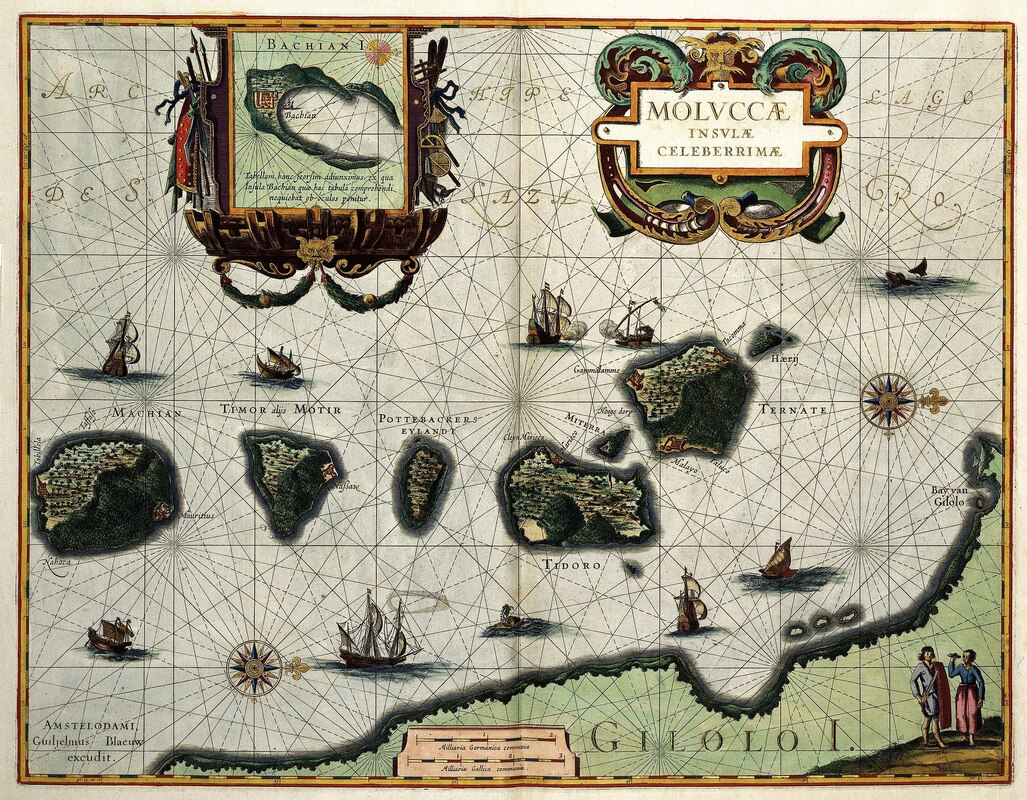 This map of the Moluccas Islands was published in 1630 by Willem Jansz. Blaeu (1571-1638). This map clearly shows that very little was known at the time about the Indonesian Archipel. The map shows the islands close together though in reality they are often thousands of miles apart. From the collections of the Koninklijke Bibliotheek. As with many things, it all has to do with money. Prior to the 16th century, all of these spices were available in Europe traveling via trade routes across Asia. Chinese and Arab traders traveled overland via the Silk Road or on ships from the Red Sea across the Indian Ocean. Cinnamon, ginger, and black pepper (native to the Malabar coast of India) were all known in Europe as far back as Ancient Rome. For centuries, Venice controlled much of the flow of spices into Europe, and the wealth gained by the spice trade may have helped spark the Renaissance. But when the Ottoman Empire wrested control of the spice trade from Europeans in 1453, things changed. European nations, spurred by improvements in naval technology, started to search for their own routes to control the lucrative spice trade. Indeed, most of the European "explorers" who ended up in the Americas were searching for a shortcut to Asia and a way to bypass the control of the Muslim Ottoman Empire and cut out the middleman altogether, ensuring massive profits. Instead of dealing with existing trade relationships, as Asian and Arab traders had for centuries, Europeans simply took what they wanted by force. The Dutch were particularly violent as they tried to take control of the Spice Islands through genocide and enslavement. Even after the plants that produced these valuable spices were successfully propagated outside their native habitats, the plantations which grew them commercially were often owned by foreign Europeans and also used enslaved labor to produce the spices more cheaply than ever. Like sugar and chocolate, the plantation economy allowed spices to be produced in massive quantities quite cheaply. The flavors that were once the purview only of wealth European aristocrats were, by the end of the 18th century, much more widely affordable by ordinary people. By the middle of the 19th century, ginger, cinnamon, nutmeg, mace, and cloves (along with sugar and cocoa) were positively common. Which is why foods like gingerbread cake, spice cake, and spiced pumpkin and apple pies became such indelible parts of American food history. But why the association with fall? In European cuisine, the most expensive foods were served around special feast days, like Christmas and Twelfth Night. Fruit cakes were rich in spices, spices flavored custards and puddings, and cookies flavored with ginger, cinnamon, mace, nutmeg, and cloves were all staples of the winter holidays. As spices became less expensive over time, they were used in other applications, but their association with the holidays - and cold weather - continued. In the United States, Americans flavored the prolific native squash with the now-familiar mixture of spices in a smooth custard pie. Pumpkin pie was born. Creating "Pumpkin Pie Spice"The name "pumpkin pie spice" refers to the mix of spices used to flavor pumpkin pies - among other things. Sadly, the mix itself contains no actual pumpkin, which is quite confusing when it is used as a flavoring agent sans pumpkin. Developed to flavor the smooth squash custards in a flaky crust we've all come to associate with Thanksgiving, the mixture of sweet, exotic spices was extremely popular. But as the 19th century turned to the 20th, the idea of hand grinding whole spices in a mortar and pestle was not only time-consuming, it threatened the use of spices altogether. Spice and extract companies like McCormick had been around since the late 19th century, but the 20th century brought a whole host of other companies to the scene, especially post WWII. The spice mix itself was commercialized first during the early 20th century, as spice and flavorings companies brainstormed ways to make baking easier and more economical for customers. Thompson & Taylor spice company was the first to create "ready-mixed pumpkin pie spice." The above advertisement, first published in 1933, features a woman asking an older woman with glasses "Mother - Why is it your pumpkin pies are never failures?" The older woman, who is spooning something into a pie crust, answers, "T&T Pumpkin Pie Spice my dear, makes them perfect every time." The advertisement goes on to read, "Home-made pumpkin pie, perfect in flavor, color and aroma, demands the use of nine different spices. The spices must be exactly proportioned, perfectly blended, and, above all, absolutely fresh. For reasons of economy, most housewives are right in hesitating to buy nine spices just for pumpkin pie. But here is news! Now, for the fist time, you can get the necessary nine spices, ready-mixed for instant use, in one 10c package of T&T Pumpkin Pie Spice - enough for 12 pies." Of course, they don't want to tell you what those nine spices are! But likely it was a mixture of cinnamon, ginger, nutmeg, allspice, and cloves, and perhaps also mace, cardamom, star anise, and black pepper. Two years later, McCormick advertised their own "Pumpkin Pie & Ginger Bread Spice," a blend of "ginger, cinnamon, nutmeg, cloves and other spices." I love that it is advertised as good for both pumpkin pie and gingerbread. Although we often associate gingerbread with Christmas, it was also often served at Halloween and throughout the colder months. As canned pumpkin grew in popularity in the 20th century, other pumpkin desserts were also developed to use the same spice profile, including pumpkin spice cake. Here's the recipe as written in the St. Louis Dispatch. Feel free to substitute shortening (and the margarine!) for butter. Pumpkin Spice Cake 1/2 cup shortening 1 cup sugar 2 eggs 1 cup canned pumpkin 3 teaspoons baking powder 2 cups flour 1 teaspoon cloves 1/2 teaspoon nutmeg 2 teaspoons cinnamon 1/4 teaspoon salt 1/2 cup chopped dates 1/2 cup rich milk METHOD: Cream shortening and sugar, add eggs, one at a time, and beat well, then stir in pumpkin. Sift dry ingredients and add alternately with milk. (If pumpkin is very dry, add more milk.) Stir in dates and bake in a loaf, in a moderate oven, 350 degrees Fahrenheit. To serve, slice thinly and spread with margarine. Delicious for tea. Spiced pumpkin foods were largely relegated to desserts for most of the 20th century - pumpkin bars, cakes, muffins, and cookies were all popular, especially after the Second World War. But we weren't at peak pumpkin spice saturation just yet. Enter, the Pumpkin Spice Latte. The Pumpkin Spice Latte and BeyondFounded in 1971 near Pike Place Market in Seattle, Washington, Starbucks originally started as a whole bean coffee company. But the specialty coffee business caught on in the dot com boom of the 1990s and franchises spread all over the country. In the 1980s, Starbucks had developed the popular holiday eggnog latte. The addition of a peppermint mocha in the early 2000s piqued corporate interest in specialty holiday drinks available for a limited time. They trialed a variety of drinks with focus groups, and the pumpkin spice latte was the surprise favorite. Released in 2003, it became a national phenomenon that only grew with time. Starbucks was not the first to develop a pumpkin spice flavored latte, but they certainly popularized it. Nowadays September and October bring the onset of just about everything pumpkin spice flavored, regardless of the weather conditions where you live. And that's the weird thing about pumpkin spice - today it is totally divorced from its geography and history. Born in the tropics, the product of genocide, enslavement, and greed, and associated for centuries with wealth and holidays, today it represents shorthand for a near-fictional concept of autumn that most Americans don't experience. Even in stereotypical New England, where pumpkin pie spice was arguably born, climate change is making autumn shorter and warmer. I'm all for letting people love what they love, and PSL and pumpkin spice are no different. I love a good spiced pumpkin dessert, don't get me wrong. But for all the fuss about pumpkin spice, I'm an apple cider girl myself. Just don't tell Starbucks or the people who seem to think everything from breakfast cereals to hand soap should be flavored with pumpkin spice. What do you think? Are you a fan of pumpkin spice? Tell me how you really feel in the comments! And if you want to learn more about the history of pumpkin pie, check out my talk "As American As Pumpkin Pie: From Colonial New England to PSL" - available on YouTube. The Food Historian blog is supported by patrons on Patreon! Patrons help keep blog posts like this one free and available to the public. Join us for awesome members-only content like free digitized cookbooks from my personal collection, e-newsletter, and even snail mail from time to time! Don't like Patreon? Leave a tip! It's no secret that my husband and I love pancakes. Like a lot. I've adapted a single recipe endlessly - apple cinnamon oatmeal pancakes, black forest pancakes, whole grain pancakes, pear ginger pancakes, gingerbread pancakes, almond pancakes, blueberry pancakes - you name it. But I think pumpkin pancakes are one of our very favorites. This is definitely a recipe for your days off, in large part because making pancakes is time consuming, but also because this is a huge recipe and makes approximately 30 pancakes. But Sarah! you might be thinking, how can two people eat 30 pancakes in one sitting? Well, dear reader, we can't. However, these pancakes are absolutely delicious as leftovers, staying tender even days later. You can pop them in the toaster for a reheated morning treat, or eat them cold as a snack. You can make them into a sandwich with butter and fig jam, or cover them in whipped cream (my husband's favorite). Pumpkin pancakes are one of those things you'll never regret having too many of. And if you've got a big family or are having a crowd for brunch? They're perfect. And don't worry, I've got tips for hot to keep the pancakes piping hot while you cook. Whole Can Pumpkin Pancakes RecipeThis recipe is about triple the original Joy of Cooking recipe I've adapted endlessly over the years. So feel free to cut it in half. But then it won't use a whole can of pumpkin. You can also cut back on the butter too, if you like, or substitute some vegetable oil. 4 1/12 cups flour (you can sub up to 2/3rds whole grain flour) 1/2 cup sugar 4 teaspoons baking powder 3 teaspoons salt 1-2 teaspoons pumpkin spice and/or cinnamon 3 eggs 1 stick (1/2 cup) melted butter 1 can (16 oz.) pureed pumpkin 3 1/2 - 4+ cups milk Preheat your griddle over medium heat. If using cast iron, grease it lightly. I prefer to use an electric griddle which can handle 5-6 pancakes at a time. I set the control to 350 F and let it preheat. Whisk the flour, sugar, baking powder, salt, and spices together until well blended in a VERY large bowl. In a separate bowl, whisk the pumpkin, eggs, and butter to combine, then add to the dry ingredients. Add 3 cups milk and whisk, incorporating the flour slowly, add more milk as necessary to make a smooth, lump-free batter. Using the measuring cup you used to add the milk, pour the batter in about 1/3 cup amounts onto the griddle. When bubbles form near the center of the pancake, flip and let brown on the other side. Now for the savvy tip taught to me by my mother. Use a dish towel to keep your pancakes hot! Using a flat-weave dish towel, place one end on the plate you're using to pile the pancakes, and leave the long tail to cover them. Add the pancakes in an overlapping circle and keep covered by the towel in between. The towel combined with the pile of the pancakes themselves will keep everything piping hot until it's ready to go to the table. Serve with butter, real maple syrup, and whipped cream for a decadent brunch. Let the leftovers cool to room temp and store in a closed container to keep them from drying out. They will keep at room temp for a few days, so if you don't plan to eat them right away, refrigerate or freeze for future use. A third cup of batter will make a pancake small enough to fit inside a conventional toaster, should you want to reheat them. I hope you enjoy these pancakes as much as we do. I'm off to eat one as a snack before heading out to do some grocery shopping. Happy eating! The Food Historian blog is supported by patrons on Patreon! Patrons help keep blog posts like this one free and available to the public. Join us for awesome members-only content like free digitized cookbooks from my personal collection, e-newsletter, and even snail mail from time to time! Don't like Patreon? Join with an annual membership below, or just leave a tip! Last week I did the first of a series of several talks with cooking demonstrations for the Poughkeepsie Library. The first was all about pumpkin pie and I made Lydia Maria Child's original pumpkin pie recipe from her 1832 cookbook The American Frugal Housewife, and then followed it with a discussion of the history of pumpkin, pumpkin pie, and pumpkin pie spice. The library recorded the talk, so you can check it out below! Lydia Maria ChildLydia Maria Child was born in Medford, Massachusetts in 1802. When she moved to Maine as a young woman to study to be a teacher, her older brother Convers, who had attended Harvard Seminary, assisted with her literary education. Upon reading and article about the rich resources New England history could provide novelists, she launched an unplanned writing career with her first novel, Hobomok, published in 1824. The book was set in 17th century New England and concerned the lives of a Native man, Hobomok, and the White woman he married and had a child with. Initially rejected by critics for its theme of miscegenation, it was later lauded by Boston literary circles. While teaching, Lydia Maria turned her attention to writing again, founding Juvenile Miscellany in 1826 - the first American monthly periodical designed specifically for children. Under Child's editorship, it became a popular and groundbreaking publication, emphasizing Protestant morality without the boring proselytizing common in children's literature at the time. In 1828 she married David Lee Child, a Boston lawyer and journalist (her maiden name was Francis) and stopped teaching, but not writing. In 1829 she published The Frugal Housewife: Dedicated to those who are not ashamed of economy, a cookbook directed at assisting the lower classes. It was published in several editions until 1832, when she changed the name to The American Frugal Housewife, to differentiate it from another cookbook of the same title published in Britain. Child published several other books on motherhood and household management, but her abolition work and radical politics largely derailed her literary career. She and her husband David Child began to identify as abolitionists in 1831. In 1833, she published An Appeal in Favor of that Class of Americans Called Africans, which called, among other things, for total abolition of slavery without compensation to enslavers. It was the first anti-slavery book (not pamphlet) published in the United States. Throughout the 1830s and '40s she became very active in the abolition and anti-slavery movements, publishing anti-slavery fiction, anti-slavery political tracts, and organizing fundraisers and events. Her anti-slavery stance and other radical politics enraged many readers in the American South, and subscriptions to Juvenile Miscellany declined so much that in 1834 she stepped down as editor. Sarah Josepha Hale edited the magazine until its closure in 1836. Child went on to publish tracts supporting Native American rights as well, including An Appeal for the Indians in 1868. Lydia Maria Child died in 1880 at the age of 78. Because of her political beliefs, she did not see the financial success of many of her author peers. But The American Frugal Housewife remains one of her most enduring legacies, along with her most famous poem, "A New England Boy's Song About Thanksgiving Day," which she published as part of her book Flowers for Children, Vol. 2 in 1844. You might know it better as "Over the River and Through the Woods." "A New England Boy's Song About Thanksgiving"Over the river, and through the wood, To grandfather's house we go; The horse knows the way, To carry the sleigh, Through the white and drifted snow. Over the river, and through the wood, To grandfather's house away! We would not stop For doll or top, For 't is Thanksgiving day. Over the river, and through the wood, Oh, how the wind does blow! It stings the toes, And bites the nose, As over the ground we go. Over the river, and through the wood, With a clear blue winter sky, The dogs do bark, And children hark, As we go jingling by. Over the river, and through the wood, To have a first-rate play -- Hear the bells ring Ting a ling ding, Hurra for Thanksgiving day! Over the river, and through the wood -- No matter for winds that blow; Or if we get The sleigh upset, Into a bank of snow. Over the river, and through the wood, To see little John and Ann; We will kiss them all, And play snow-ball, And stay as long as we can. Over the river, and through the wood, Trot fast, my dapple grey! Spring over the ground, Like a hunting hound, For 't is Thanksgiving day! Over the river, and through the wood, And straight through the barn-yard gate; We seem to go Extremely slow, It is so hard to wait. Over the river, and through the wood, Old Jowler hears our bells; He shakes his pow, With a loud bow wow, And thus the news he tells. Over the river, and through the wood -- When grandmother sees us come, She will say, Oh dear, The children are here, Bring a pie for every one. Over the river, and through the wood -- Now grandmother's cap I spy! Hurra for the fun! Is the pudding done? Hurra for the pumpkin pie! "Pumpkin And Squash Pie" (the filling)Here is Lydia Maria Child's original text: "For common family pumpkin pies, three eggs do very well to a quart of milk. Stew your pumpkin, and strain it through a sieve, or colander. Take out the seeds, and pare the pumpkin, or squash, before you stew it; but do not scrape the inside; the part nearest the seed is the sweetest part of the squash. Stir in the stewed pumpkin, till it is as thick as you can stir it round rapidly and easily. If you want to make your pie richer, make it thinner, and add another egg. One egg to a quart of milk makes very decent pies. Sweeten it to your taste, with molasses or sugar; some pumpkins require more sweetening than others. Two tea-spoonfuls of salt; two great spoonfuls of sifted cinnamon; one great spoonful of ginger. Ginger will answer very well alone for spice, if you use enough of it. The outside of a lemon grated is nice. The more eggs, the better the pie; some put an egg to a gill of milk. They should bake from forty to fifty minutes, and even ten minutes longer, if very deep." And here's my translation: 1 sugar pie pumpkin 2 cups whole milk 4 eggs 2 tablespoons cinnamon 1 tablespoon ground ginger 1/2 teaspoon salt 1/4-1/2 cup maple syrup Cut pumpkin in half, scoop out seeds, and roast, cut-side down, for 45 minutes at 350 F. When soft and easily pierced with a knife, remove from oven and scoop out flesh from rind. Mash thoroughly with a fork to remove stringiness. Let cool, then add spices and salt and mix thoroughly, then add all liquid ingredients. Pour into chilled pie shells (recipe below) and bake at 450 F for 15 minutes, then reduce heat to 350 F and bake for an additional 30 minutes. When the center is solid (a slight wobble is allowed), the pie is set and baked. Serve warm or cold with additional maple syrup (if desired) and whipped cream (recipe below). If you have extra filling, add to ungreased glass baking dishes or custard cups for equally good "crustless pumpkin pie." "Pie Crust"The original: "To make pie crust for common use, a quarter of a pound of butter is enough for half a pound of flour. Take out about a quarter part of the flour you intend to use, and lay it aside. Into the remainder of the flour rub butter thoroughly with your hands, until it is so short that a handful of it, clasped tight, will remain in a ball, without any tendency to fall to pieces. Then wet it with cold water, roll it out on a board, rob over the surface with flour, stick little lumps of butter all over it, sprinkle some flour over the butter, and roll the dough all up; flour the paste, and flour the rolling-pin; roll it lightly and quickly; flour it again; stick in bits of butter; do it up; flour the rolling-pin, and roll it quickly and lightly; and so on, till you have used up your butter. Always roll from you. Pie crust should be made as cold as possible, and set it in a cool place; but be careful that it does not freeze. Do not use more flour than you can help in sprinkling and rolling. The paste should not be rolled out more than three times; if rolled too much, it will not be flaky." Well that was a bit of a doozy of a recipe! Essentially, she's making an all-butter pie crust by combining shortbread and puff pastry techniques. And it turns out pretty well! If you're looking for a good all-butter pie crust recipe, this is a fairly reliable one, if you handle it gently. Here's my translation: 1 stick (1/4 pound) very cold unsalted butter 1 1/4 cup all-purpose flour 1/4-1/2 cup reserved flour for rolling ice water With cold hands, cut the stick of butter lengthwise in thirds, then rotate one quart of the way and cut in thirds again. Then cut crosswise until you have nice little cubes. Use at least half of the butter to rub into the 1 1/4 cup flour in a large bowl. Add more butter if you need to. From a bowl of ice water, using a tablespoon, add the water, 1-2 tablespoons at a time, and toss mixture with a fork. You'll need 6-8 tablespoons, depending on your flour and butter ratios. When you can make a ball with your hands and it sticks together nicely, but not too wet, you're good. Form the mass into a ball and roll out on a well floured surface, taking care to roll gently so as not to break the dough or roll unevenly. Once you have rolled out a round, spread whole cubes of butter across half the circle, fold in half, and roll that flat. Then repeat 2 more times (making sure to reserve enough butter for each rolling). When complete, roll out for crust. You'll have at least one single crust, with some left over for smaller pies. Place in pans, trim and crimp edges, and chill until ready to fill. Bake with pumpkin filling as directed above, or add your favorite fruit filling. My crust turned out delightfully crisp, but a little flat in flavor. A pinch of sugar and/or salt would probably be a nice addition. Hand Whipped CreamThis one isn't in The American Frugal Housewife, but it goes deliciously with pumpkin pie! The higher quality/fat content your cream, the easier it is to whip by hand. 1/2 cup heavy cream 1 tablespoon sugar or maple syrup 1 teaspoon homemade vanilla (recipe below) In a very deep bowl (preferably glass, which stays nice and cold), add the chilled cream, sugar, and vanilla. Tilt bowl and beat cream with a wire balloon whisk in a circular motion until you add enough air to the cream that it holds its shape. Do not overbeat, or you'll end up with sweet vanilla butter. Chill until ready to serve. Homemade VanillaHomemade vanilla lasts nearly forever, so it's a worthy investment, but vanilla beans are quite expensive these days, so make at your own expense. Still probably cheaper than buying the tiny bottles of the real stuff. You can make it with vodka, but I find the gold rum is much nicer and mellower. Also makes a great Christmas present. A dozen or so whole vanilla beans Gold rum (get the not-quite-the-cheapest brand) Cut the vanilla beans in half and add them to a quart jar. Fill jar with gold rum. Let sit in a dark place for a week or so before using. Keep adding rum as you deplete the vanilla. You want to keep the beans submerged at all times. Add beans every few years to keep the flavor up. Happy Thanksgiving!And that, my dears, is that. If you made it this far through the blog post, congratulations! I hope you enjoyed the video, some history about Lydia Maria Child, her famous poem, and the recipes. Keep your eyes peeled for more cooking-demonstration-and-talk programs coming up in December, January, and February. I hope you have a wonderful Thanksgiving! As always, The Food Historian blog is supported by patrons on Patreon! Join us for awesome members-only content like free digitized cookbooks from my personal collection, e-newsletter, and even snail mail from time to time!
Thanks to everyone who joined us for Episode 23 of the Food History Happy Hour! In this episode, we discussed all things Thanksgiving, including the history of the First Thanksgiving, what foods likely were and were not present at that event, the importance of Indigenous foods in the development of the United States, how to honor Indigenous contributions at Thanksgiving and support Indigenous producers, how Thanksgiving came to be a national holiday, and the origins of many of Thanksgiving's most popular side dishes and desserts.
Rail Splitter (1917)
This recipe comes from the 1917 Recipes for Mixed Drinks by Hugo R. Ensslin. The original reads:
1 pony syrup, juice ½ lemon. Shake well in mixing glass with cracked ice, strain into collins glass, add a cube of ice and fill up with ginger beer. I substituted maple syrup for the simple syrup, but boy was that way too much syrup to use with modern ginger ale (I couldn't find ginger beer)! Ginger beer is likely stronger in flavor and less sweet, so go whole hog if you use that, but if you're not a fan of sweet drinks, go easy on the syrup. Episode Links
There are a ton of really great resources out there about Thanksgiving history and Indigenous foodways, but here are a few to whet your appetite:
Decolonizing Thanksgiving
In the episode we talked a little bit about the myths behind Thanksgiving and what it means to modern Indigenous people, but there's a lot more to be done. Here are some ways you can decolonize your own Thanksgiving, regardless of your cultural background.
Food History Happy Hour is supported by patrons on Patreon! Join us for awesome members-only content like free digitized cookbooks from my personal collection, e-newsletter, and even snail mail from time to time!
Today is Indigenous Peoples' Day. What, you thought it was Columbus Day? Well, for some people who don't know any better it still is, but Columbus was a pretty terrible person, driven by greed, and he didn't "discover" anything. Instead, he did things like sell 9 year old Taino girls into sex slavery, cut off children's hands if they didn't meet gold quotas, and generally committed genocide and slavery against every non-white person he met. He almost completely wiped out the Arawak-speaking peoples of the Caribbean, including the Lucayan people of the Bahamas and especially the Taino people of Hispaniola (present day Haiti and Dominican Republic). But as with most genocides, they're never 100% successful, and people throughout the Caribbean are descended from Taino people. One thing Columbus did lend his name to is a term called "The Columbian Exchange." The term was coined in the 1970s by historian Alfred W. Crosby, who studied the impacts of geography and biology on history, specifically the relationship between Europe and the rest of the world. Because Columbus was the first European to bring back many of the plants now used across the world, the exchange is named after him. Essentially, Irish potatoes, Italian tomato sauce, Swiss chocolate, Thai chilis, and a whole host of other important international foods are not actually from any of those places. They are ALL indigenous to North and South America and did not exist outside those continents prior to 1492. I'm going to catalog Indigenous American foodways in a minute, but first I want to emphasize how important it is to recognize that all of these foods are a result of Indigenous agricultural innovation. There is a tendency among many White folks to assume that these foods were just growing "wild" - and while that may be the case with some fruits, the vast majority were cultivated by Indigenous people, often in brilliant and surprising ways. And if you'd like to skip the list and go straight to figuring out where you can buy Indigenous foods and support Indigenous growers, harvesters, and producers, a good starting place is the list created by the Toasted Sister podcast. It's not comprehensive, but it's a great start. You can also check out this directory of certified American Indian Foods producers by the Intertribal Agricultural Council. You can even search by state! A small disclaimer - this is obviously not a complete list of Indigenous foods - I thought I would list the most influential foods globally and in the modern American diet. But I encourage you to use the magic of the internet to see what other foods you can find Indigenous to the area you live. And one final note - while it is important to preserve Indigenous foods and seeds, it's equally important to support the Indigenous people working to preserver them, like the Indigenous Seed Keepers Network. So while groups like Seed Savers Exchange are great, I encourage everyone to seek out Indigenous-owned and Indigenous-led companies and groups when choosing who to support. AmaranthWhere I grew up on the Northern Plains, in Lakota territory, one species amaranth is often known as "pigweed," and is considered a noxious weed by farmers. But Indigenous people know it as an important grain crop. Developed by the Aztec, amaranth was banned by the Spanish. The leaves of amaranth are also edible and some varieties are known as "callaloo," an important green vegetable for enslaved African peoples throughout the Caribbean and southern United States. If you're a gardener, "love-lies-bleeding" is a decorative variety of amaranth. There are dozens of varieties, but amaranth grains are often available for purchase from specialty stores and online. AvocadoAvocadoes, modern purview of hipsters, are actually an ancient fruit developed near Puebla, Mexico nearly 10,000 years ago (seriously, the world owes so much to Mexico in terms of agricultural innovation). The Indigenous residents of Puebla began cultivating the tree as much as 5,000 years ago. Modern-day avocadoes come in a whole host of varieties, but residents of the U.S. are most familiar with the Hass variety. Introduced to the American Southwest in the 1830s, avocado consumption in the United States didn't really take off nationally until the 1930s, influenced by California cuisine and used primarily in salads. Look in old cookbooks for references to "alligator pears," so named because of their bumpy green skin and pear shape. BeansBeans, especially climbing pole beans like the scarlet runner bean, are an important component of the Three Sisters style of agriculture, in which pumpkins or squash, corn, and beans are grown in concert with each other. The corn provides the stalk for beans to climb, the beans fix nitrogen in the soil for the corn and squash, and the broad leaves of the squash shade the ground, helping to prevent competing plants from growing and keeping the soil moist. Although some varieties of legumes did exist in Europe prior to the Columbian Exchange, notably chickpeas, peas, lentils, and broad beans, the introduction of the wide variety of cultivated Indigenous beans to Europe, especially kidney beans, including what would become the famous Italian cannelini. Black beans, pinto beans, and pink beans are other Indigenous varieties. Blueberries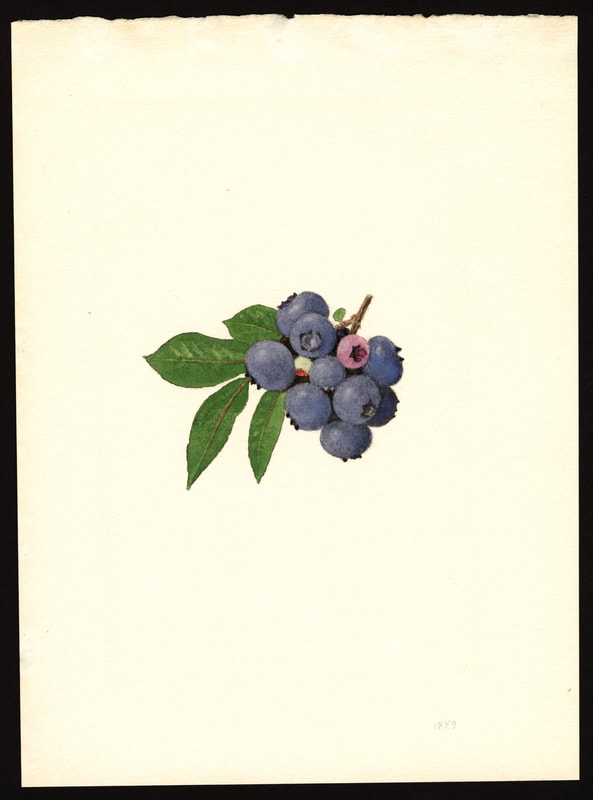 Image of the Weymouth variety of blueberries (scientific name: Vaccinium corymbosum), with this specimen originating in New Jersey, United States. Source: U.S. Department of Agriculture Pomological Watercolor Collection. Rare and Special Collections, National Agricultural Library, Beltsville, MD 20705, 1940. Lowbush blueberries (often marketed in grocery stores as "wild" blueberries) are native to North America, as other other blueberry-like fruits including huckleberries and juneberries (also known as serviceberries). Although these plants grew wild, blueberry barrens and other stands were often maintained by Indigenous peoples. Dried blueberry and cracked corn mush may have been served at the First Thanksgiving. Early European observers misnamed them "bilberries," after a relative native to Britain. In the early 20th century, highbush blueberries were cultivated from Indigenous blueberries in New Jersey. Highbush blueberries are bigger and therefore easier to harvest and ship than lowbush blueberries and are most often what you'll find in grocery stores today. CashewMost people probably associate cashews with Southeast Asia and Indian cuisines. But cashews are actually native to Brazil. The word "cashew" is a corruption of the word "acaju," which is Tupi for "nut." The Tupi people (of which there are dozens of sub-tribes) were who the Portuguese encountered when they first arrived there in the early 1500s. It was the Portuguese who brought the cashew to Goa, India in the late 1500s, where it thrived. Today, most commercially produced cashews are grown in India. ChiaMaybe you've noticed the trend for chia puddings these days. Or perhaps you're old enough to remember the Chia Pet craze of the 1980s. But the origins of chia are much older than you might suppose. Native to Central America, chia is thought to have been cultivated by the Aztecs as much as 3,500 years ago. An important staple crop throughout Mesoamerica, it was likely also used for religious purposes and may have been banned by Spanish colonizers for that reason. Thankfully, it survived. Chilis & PeppersChili peppers - from which all modern capsicums are derived, including bell peppers - were cultivated in Mexico as early as 6,000 years ago. Self-pollinating, chilis quickly spread throughout Mexico and Central and South America. Known in many countries by their cultivar name - capsicum - in the United States we call them "peppers" because Columbus and other Europeans associated them with the heat they had previously only known from black pepper. Like cashews, chili peppers were brought to Southeast Asia by Portuguese traders, where they quickly took hold as an essential part of many Asian cuisines. In the United States, New Mexico is best known for its production of chili peppers and its chili-eating heritage. Chilis are an essential ingredient in salsa, and Indigenous Mexican peoples use all different varieties (not just jalapenos and habaneros) for different levels of heat and flavor. ChocolateToday, chocolate is most often associated with Switzerland, Germany, and France. But its origins are ancient and date to Mesoamerica. The oldest references are for the Olmec peoples of central Mexico, who used it in religious ceremonies. But it was also used by the Maya and Aztec peoples, who both used cocoa beans as currency and used chocolate beverages in daily life and religious ceremonies. Although the origin of cacao plants is contested, they appear to have been common in Central America and actively cultivated as early as 5,300 years ago. Chocolate's chemical signature is often tracked as part of archaeological digs, and recent finds have suggested that its use and cultivation are earlier and more widespread than previously known. When it was introduced to Europe, Europeans treated it much like they did another dark, bitter beverage - coffee - by adding cream and sugar to it and drinking it for breakfast. By the 18th century, mechanization and slavery had made chocolate affordable to the middle classes. But it wasn't until the 19th century that chocolate bars, mixed with vanilla, sugar, dairy solids, and cocoa butter, came into widespread use. Corn (Maize)For most Americans, corn is hybridized sweet corn, popcorn, and maybe yellow or white cornmeal (or grits). But corn comes in thousands of different varieties and can be processed in hundreds of different ways. Did you know, for instance, that different varieties of corn - popcorn, dent, flint, flour, etc. - were cultivated for different uses? And that most corn can be eaten at all stages of development? And that "sweet" corn was originally just eating immature "green" corn before the sugars had turned to starch? Indigenous cooks also developed nixtamalization - a process whereby corn is soaked in wood ashes and water (i.e. lye) to de-hull and soften the corn. Nixtamalization also has the important additional benefit of releasing the niacin (Vitamin B3) from the corn so that it can be processed by the body. Niacin deficiency, also known as pellagra, plagued 19th and early 20th century White Americans, who did not know how to process the corn properly. Corn was developed from a grass native to south central Mexico called teosinte - which is still used today in Mexico as a fodder for livestock. As cultivated varieties spread throughout North America, they took on different characteristics as they cross-pollinated with other varieties and native species of teosinte. Corn is wind pollinated, meaning that it cross-breeds easily. Today, corn's global dominance is almost entirely related to its role as livestock feed, especially with beef. Sadly, beef cattle are not well suited to being raised on corn, and "corn fed beef," which is designed to put on a lot of fat for your "well-marbled" steak, is actually extremely destructive to bovine digestive systems. Not to mention unhealthy for humans, too. American agricultural subsidies for corn, which allow food processors to purchase it for less than it costs farmers to produce, have also allowed the proliferation of its use as an industrial food, notably corn syrup, but corn is now in almost everything we eat. And not in a good way. If you want to help Indigenous producers, buy Indigenous-grown Indigenous corn products. Here in New York, you can buy Iroquois White Corn. Don't feel like eating corn but want to help? Support Indigenous seedkeeper groups. Can't find one in your area? Donate to the Indigenous Seedkeeper's Network. CranberriesToday, cranberries are most often associated with Thanksgiving and New England, but cranberries are native to the northeast of North America and were used often by Indigenous peoples in those areas. Although a variety of cranberry is native to the bogs of Britain, and the Scandinavian lingonberries are a relative, the vast majority of modern cranberry consumption is based on species native to the U.S. and Canada. Maple Syrup & SugarMaple Syrup is one of the few sweeteners native to North America (honeybees, sugar cane, sorghum, and sugar beets are all imported). First used by Indigenous peoples in the Northeast, it is unclear which tribes first started use of maple sap as a sweetener. One Haudenosaunee/Iroquois legend indicates that the people first observed red squirrels cutting into the bark of maple trees and returning to drink the sap that flowed out. This has since been confirmed by scientific observation of squirrel behavior. Maple syrup and sugar was made either by freezing the water out of the sap, or by boiling with heated rocks. European colonists were quick to adopt maple sugaring as an important source of late winter calories and shelf-stable year-round sweetener. Although for some reason in the United States maple products are associated with fall, maple sugaring time is usually in March, when daytime temperatures rise above freezing, and fall below freezing at night - perfect conditions for optimum sap production. PapayaThe native range of the papaya is from southern Mexico to northern South America, although it has been naturalized throughout the Caribbean and the Gulf of Mexico. With a quick maturity - some papaya can produce fruit after just one year - Europeans spread the plant to other tropical regions around the world where it is widely used in many different stages of ripeness, both cooked and raw. PeanutsThe archaeological record of peanut cultivation is not clear, but it is clear that it was present in Brazil and Central America in the 16th century when European explorers arrived in South America. The peanut is not actually a nut - it is a legume and more closely related to beans than, say, pecans. But its culinary importance grew once it was imported by Europeans to Africa and Asia. The peanut actually came to North America by way of enslaved Africans, who carried it with them as they were stolen from their homelands. The peanut was largely regarded as animal fodder by Europeans, and used in subsistence farming by enslaved Africans and African-Americans in the U.S. In the late 19th century, a number of people, including John Harvey Kellogg and Heinz, were filing patents for peanut-butter-like substances. Ironically, George Washington Carver, African-American plant scientist and the man most associated with peanut butter, didn't actually invent it. Today, about the only people who don't enjoy peanuts much are Europeans, which is ironic given their role in spreading them globally. PecanNative to North America, the pecan is one of my favorite nuts. Its native range ran from New England to Mexico and was widely used by Indigenous peoples. The word "pecan" likely comes from a 16th century European corruption of the Algonquian word "pacane," describing nuts that required stones to crack. Hickory nuts (also known as butternuts) and black walnuts are in the same family as pecans. PineappleAlthough most Americans associate pineapples with Hawaii, they are actually native to the Paraguay River basin, which stretches between modern-day Brazil, Bolivia, Paraguay, and Argentina. Pineapples were cultivated by the Maya and Aztecs and Europeans first encountered them in the 15th century. Named the "pine apple" because of its resemblance to a pine cone and its status as a fruit, Europeans were able to grow some pineapples in greenhouses. In the 18th century, the pineapple was a symbol of hospitality and wealth and were much smaller than modern-day cultivars. Pineapple plantations were first installed by White Americans in Hawaii in the 1880s. James Dole made his fortune with pineapple plantations, processing, and canning innovations, which introduced the pineapple to ordinary Americans across the country. PotatoesWhat would Europe be without the potato? And yet, this starchy tuber, which spread throughout the Andes mountains prior to European contact, is originally from the border of modern-day Peru and Bolivia and dates back as far as 8,000 years ago. Cultivated from the wild tuber by Indigenous agriculturalists, over 5,000 varieties now exist. Potatoes were the staple crop of the Inca, who built their empire on it. Andean Indigenous peoples used it in all the usual ways, but also pioneered a special preservation technique called chuño, whereby the potatoes were frozen and dried in a way that made them very light and allowed them to keep for years. Chuño was usually prepared as part of a stew and was an important cash crop for Indigenous farmers. Prior to its introduction to Europe, most of the poorer classes relied on turnips and rutabaga for starchy bulk calories. But the potato was not only more palatable, it was more prolific, easier to grow, and it kept longer in storage. The shift to potatoes throughout Northern Europe in particular meant that the advent of potato blight in the mid-19th century, particularly in subjugated Ireland, started a mass migration of Europe's poor to the nations which had fed them so well for so long. QuinoaAlso native to the Andes and Peru, quinoa (pronounced "keen-wah"), is a member of the amaranth family. Used as a cereal crop by the Inca and other Indigenous peoples in the Andes mountains, quinoa has been in cultivation for as many as 5,000 years. When the Spanish arrived, determined to stamp out Incan culture, quinoa almost disappeared, but it persisted. Its "discovery" by White Americans interested in "superfoods," the price of this essential Indigenous grain actually skyrocketed. Whether or not this is good for Indigenous farmers is a matter of some debate, but when in doubt, be sure to buy from Indigenous producers. Squash & PumpkinAlong with corn and beans, squash make up the famous "Three Sisters" of Indigenous foodways. One of the oldest cultivated crops of the Americas, dating back as many as 10,000 years ago (before maize and beans), squashes are native to the Andes and Mesoamerica and wild varieties actually predate human inhabitation on the continents. Their cultivation was widespread throughout North and South America prior to European contact. All global varieties of squash, including pumpkins, zucchini, and decorative gourds, originated in the Americas. The word "squash" is an English corruption of the Narragansett word "askutasquash" meaning "a green thing eaten raw." Today, pumpkins (a word for a particular kind of large, round, orange squash that doesn't actually have an official classification) are mostly associated with Thanksgiving and New England foodways, although in the 19th century they were also stereotypically associated with slavery. They were one of the Indigenous foods featured in the first "American" cookbook, published by Amelia Simmons in 1796. SunflowerSunflowers are also native to North America, thought to have been cultivated near present-day Arizona and New Mexico around 3000 BC. Cultivated for their oily seeds and tuberous roots (also known as sunchokes or "Jerusalem artichokes"), sunflowers were also sometimes used as dyes. Although they were an important crop for Indigenous peoples, they were not in widespread use by European-Americans until their popularization in 19th century Russia, where they had been imported. Today, North and South Dakota are the biggest producers of sunflowers in the US and sunflower seeds, "sunbutter" and sunflower oil are popular modern uses. Not so much with the "sunchoke," although the tubers are regaining some popularity. Sweet PotatoSweet potatoes are native to Central America. Although called "potatoes" and sometimes "yams," they are not related to either plant. Sweet potatoes are more closely related to morning glory and bindweed. Sweet potatoes were spread across the Pacific nearly 400 years before Columbus by Polynesians, who brought the vine back with them. It was the Spanish and the Portuguese, however, who spread the sweet potato to the Philippines and Japan, respectively. The Spanish also brought the sweet potato to West Africa, where it was adopted, but not without some derision as its taste. The yam is native to Africa, which is likely why so many Americans, especially African-Americans, call sweet potatoes "yams." TomatoWhich is more authentic? Italian tomato sauce, or Mexican salsa? Hate to break it to you, but the Mexicans have the ayes on this one. Wild tomatoes are native to Western Mexico and were originally tiny, sour, and hard. Careful cultivation by Indigenous people led to thousands of more edible varieties, including husk tomatoes ranging from tomatillos to ground cherries. In Nahuatl (the Aztec language), "tomatl" was used to reference green tomatoes like tomatillos, and "xitomatl" was used for red varieties. The Spanish translated it as "tomate" and hence the term "tomato." When brought back to Europe, the bright red fruits were originally identified as a type of eggplant (both are members of the nightshade family), it garnered the nickname "love apple," and was originally considered poisonous. Although it was cultivated as a decorative plant, it was not in widespread use in Europe until the mid-18th century. It's widespread adoption in Italy was likely connected to nationalist sentiments in the 19th century and its association with the color red in the flag of Italian unification. In the United States, Thomas Jefferson may have helped popularize the tomato outside of the American southwest. And his relative by marriage, Mary Randolph, featured tomatoes in her Virginia Housewife cookbook, published in 1824. By the end of the 19th century, tomatoes became a popular American preserve, providing color, acidity, and sweetness to the typical American table. TurkeyIndigenous to North America, turkeys have been consumed by Indigenous peoples for centuries. Turkeys were domesticated in Mesoamerica as early as 800 BC. The Spanish brought back domesticated Aztec turkeys to Europe, where they quickly joined the European game bird lexicon. Associated with Christmas in Britain as early as the 17th century, the British Christmas goose persisted until the 20th century. In the United States, turkey is most commonly associated with Thanksgiving, although it is also often consumed at Christmas. Turkeys are one of the only indigenous American meat animals widely adopted in Europe and elsewhere. The name "Turkey" is likely associated with how Europeans were first introduced to turkeys - either through trade with the Middle East, or in association with guinea fowl as a game bird, introduced via Turkey. Domesticated turkeys are thought to have been descendants of Aztec domesticated birds reintroduced to North America via Europe. The turkeys purportedly eaten at the First Thanksgiving would have almost certainly been wild varieties, however. A shift to large scale commercial poultry production in the early 20th century has helped introduce turkey into the American diet through things like sliced deli turkey. The virtual disappearance of wild turkeys from New England due to deforestation meant that they had to be reintroduced to New England, an effort that began in the 1960s. VanillaVanilla is an orchid native to the Caribbean and south Central America. Cultivated by pre-Columbian Maya people, it was widely adopted by subsequent Indigenous peoples, including the Aztecs, who added it as a flavoring agent to their chocolate beverages. Attempts to cultivate vanilla in Europe were unsuccessful, largely because vanilla is naturally pollinated only by a native species of bee. An boy named Edmond Albius, enslaved on the Island of Reunion, pioneered a hand pollination technique that allowed vanilla to spread across the globe, including to the islands of Tahiti and Madagascar. Wild RiceWild rice, known in Anishinaabe/Ojibwe as "manoomin," is, indeed, a wild rice. Growing in marshy lakes, truely wild rice is harvested by hand from the wild. Wild rice is central to Anishinaabe culture, and one legend indicates that Ojibwe people emigrated from the Atlantic coast to the "place where food grows on the water." Although Northern wild rice is the most common, other two other varieties are native to North America - one in Florida and one in Texas. Suggestions to grow wild rice commercially were suggested as early as the mid-19th century, but it was not attempted on any scale until the 1950s. Commercially cultivated "wild" rice is now a great source of controversy, as is the genetic modification of wild rice. Opponents argue that commercial wild rice conflicts with Indigenous food sovereignty and treaty rights. True wild rice can also be endangered by relaxed water pollution standards, oil pipelines, and more. Indigenous people were rarely if ever involved in the research and are not beneficiaries of commercial varieties. For reasons of taste and to support Indigenous tribes and businesses, I strongly recommend that you source your wild rice from Indigenous producers. ConclusionPhew! That is a LOT of influential foods developed by Indigenous Americans. I hope you learned something with this catalog - I know I did. And I hope you'll support Indigenous food producers by purchasing direct whenever you can. Thanks to the magic of the internet, that's now possible more than ever. And for those of you interested, I'm planning a couple more posts (and a few talks) about the influence of pumpkins, corn, wild rice, and more. So stay tuned! What's your favorite Indigenous American food? The Food Historian blog is supported by patrons on Patreon! If you found this article interesting, useful, and/or thought-provoking, join us for awesome members-only content like free digitized cookbooks from my personal collection, e-newsletter, and even snail mail from time to time!
Thanks to everyone who joined us for Episode 21 of the Food History Happy Hour! We discussed pumpkins and their indigenous origins, as well as the history of pumpkin pie spice, including a discussion of the European spice trade, where various spices come from, and how they went from the purview of the fabulously wealthy to hopelessly old-fashioned, to ragingly popular again. Plus we talk about how pumpkin spice got its name and what's REALLY in those cans of pumpkin puree.
Port Wine Negus (1862)
This particular recipe comes from the famous Jerry Thomas, in his 1862 book, The Bar-Tender's Guide but the drink is actually much older, dating back to the 18th century, and features in the novels of Jane Austen and Charles Dickens. By the Victorian period, it was commonly used for children's parties (shocking I know), and it seems that Jerry Thomas may have lifted his recipe directly from Isabella Beeton.
I followed this recipe pretty closely, and it makes a LOT - I filled my teapot full - so be aware that either you need to save any leftovers for a soda negus (also in Jerry Thomas), share with friends, or cut the recipe down. Here's the original: 151. Port Wine Negus
Here's the version I made:
4 cups water, brought to a boil 2 cups Ruby port 1/2 cup sugar 4 tablespoons bottled lemon juice 4 cloves about 1/4 teaspoon fresh grated nutmeg This makes one and a half quarts of hot Negus, which is delicious but was too sweet for my taste. I'm guessing the original recipe called for Tawny port, which is not as sweet as Ruby port. I also cheated and used bottled lemon juice instead and added cloves because another recipe for soda negus I saw called for them. It really is imperative to use fresh nutmeg for this recipe, as the ground kind doesn't hold a candle in flavor. One or two nutmegs will last you a long time, so you don't have to buy a ton. It is fairly addictive, so just be forewarned. I may or may not have had four cups in the course of Food History Happy Hour and writing this blog... Episode Links:
I had fun researching this topic and even learned a few things! One of my primary sources for the European spice trade as the book Nathaniel's Nutmeg, by Giles Milton. It's a highly engaging read and designed for a more popular audience, so if anyone wants to read about bloodthirsty Europeans obsessed with spice and their various maritime misfortunes, check it out.
other fun links include:
The next Food History Happy Hour won't be until Friday, October 30, 2020, but we'll be discussing Halloween! And making the Stone Fence cocktail. I hope you'll join us then. AND! I have a special treat for Patreon members old and new - join or renew at the $5 level and above, and you'll get a special Halloween packet mailed to you! Chock full of all kinds of fun history, images, party ideas, recipes, and more.
If you enjoyed this episode of Food History Happy Hour and would like to support more livestreams, please consider joining us on Patreon. Patrons get special perks like access to members-only content.
|
AuthorSarah Wassberg Johnson has an MA in Public History from the University at Albany and studies early 20th century food history. Archives
July 2024
Categories
All
|
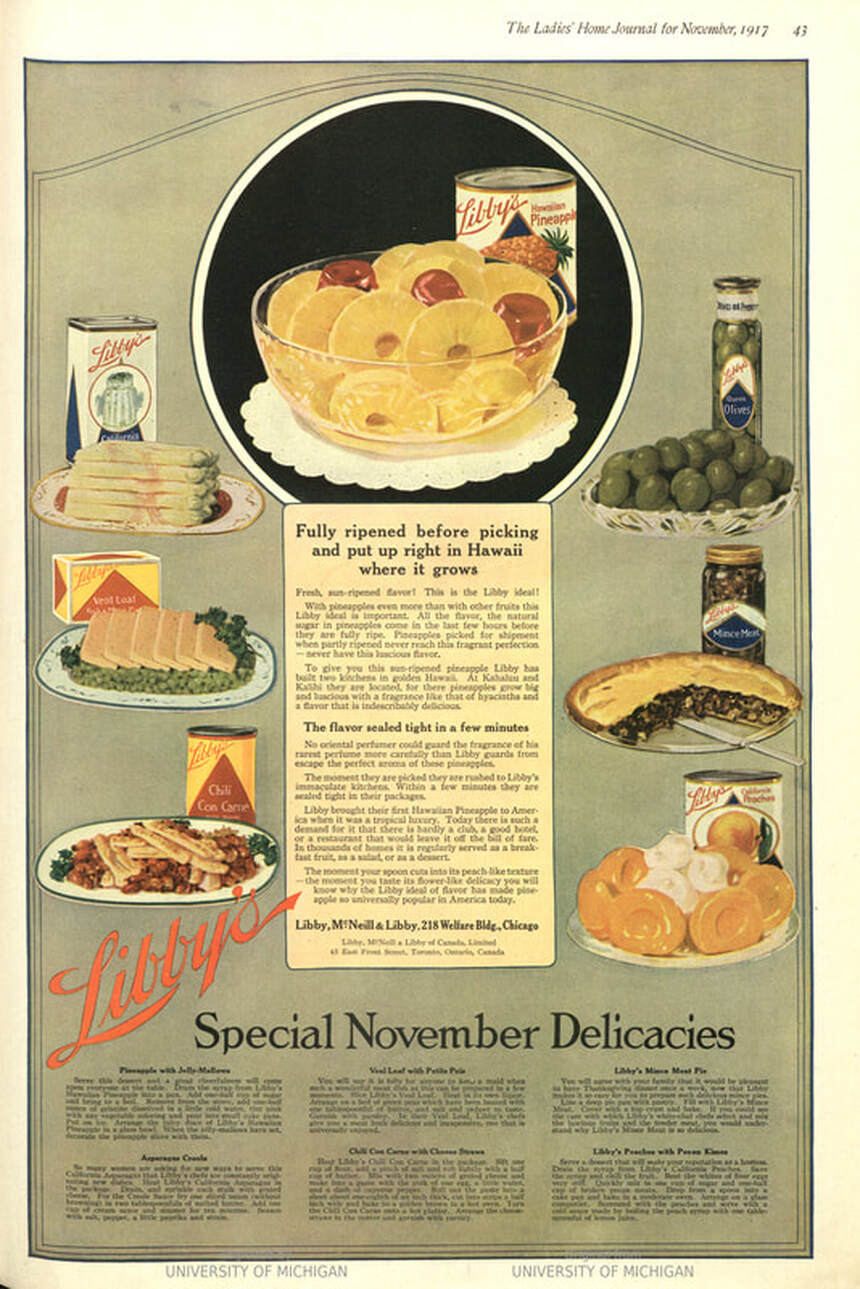
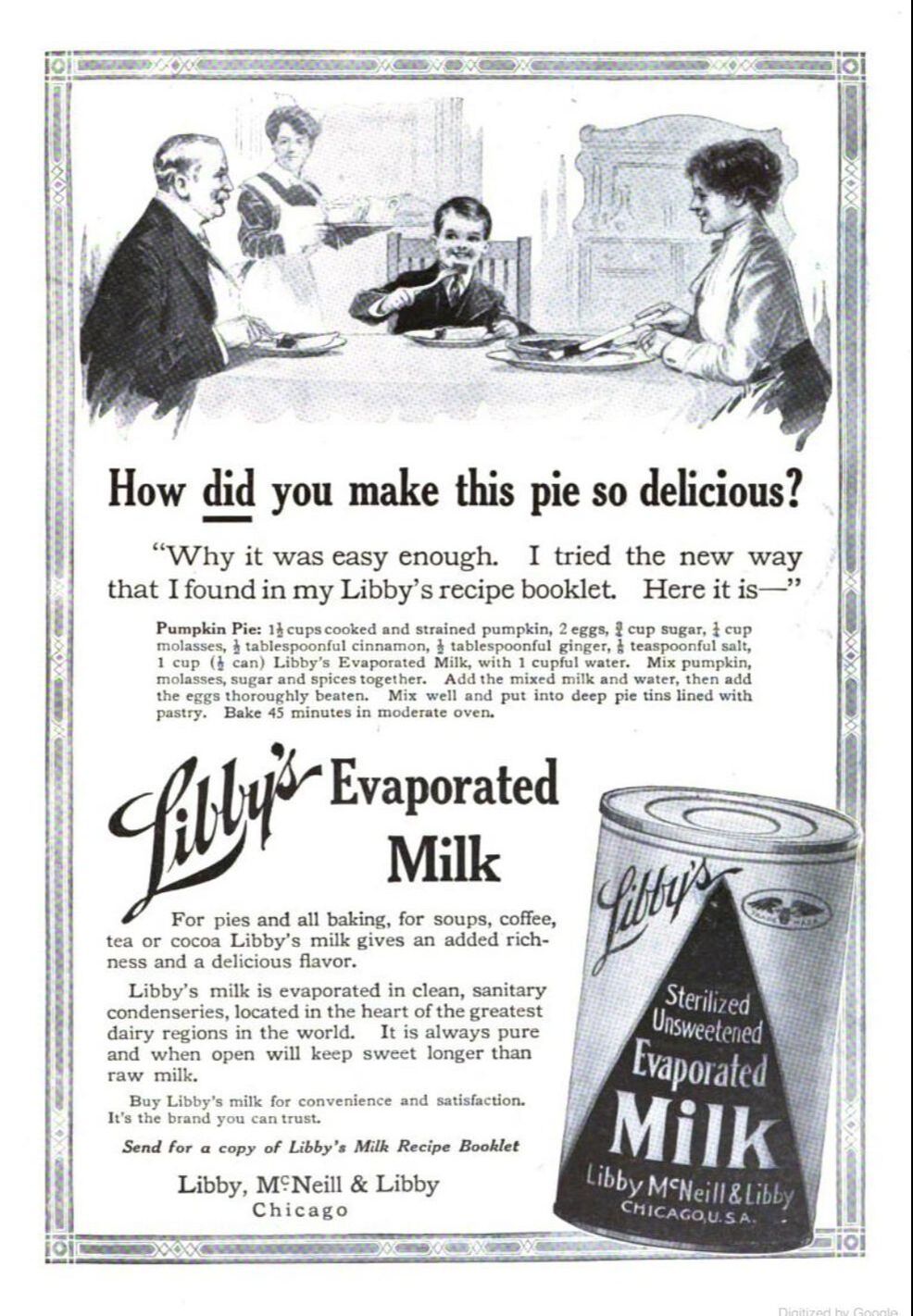
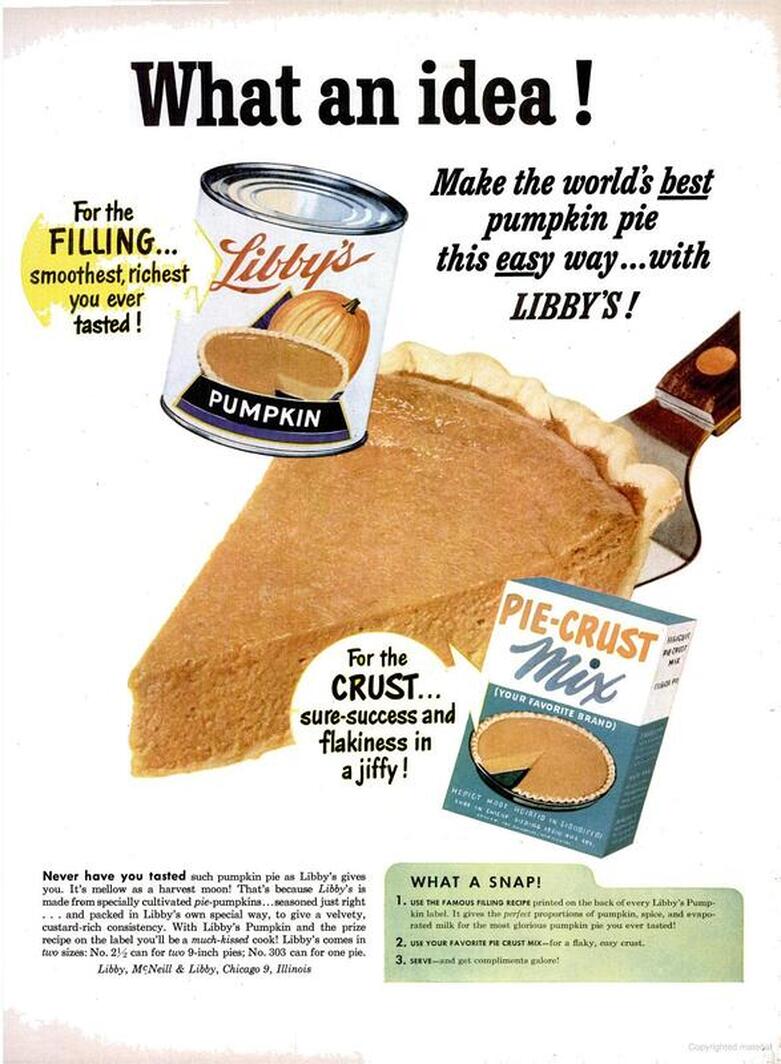
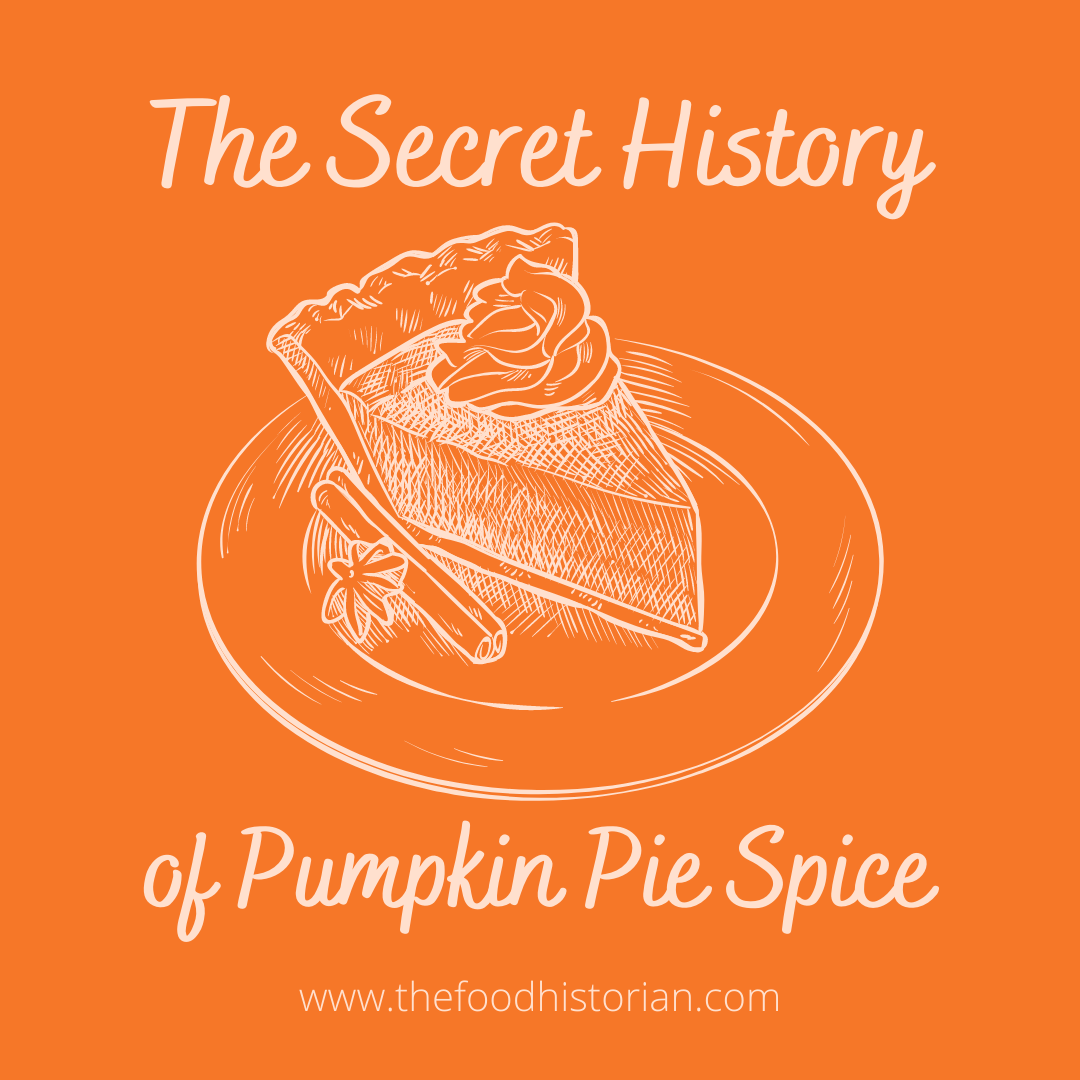
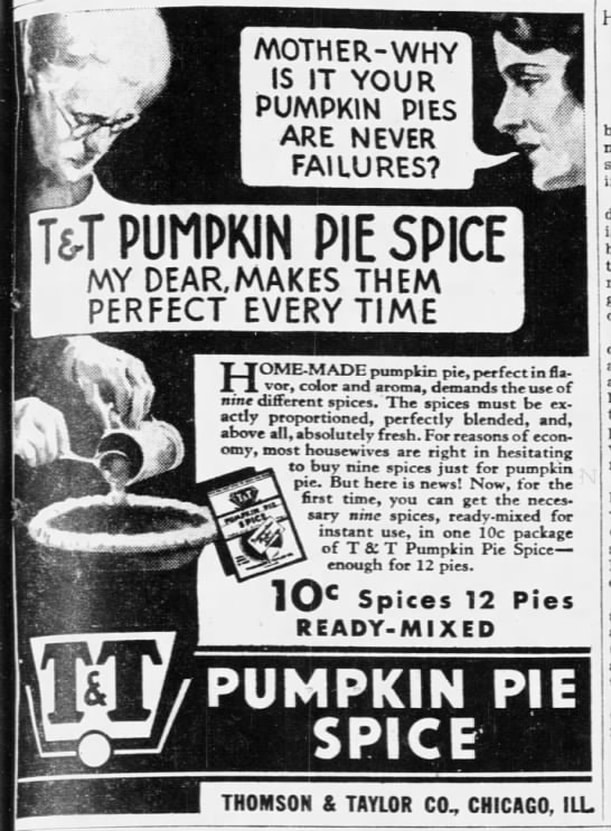
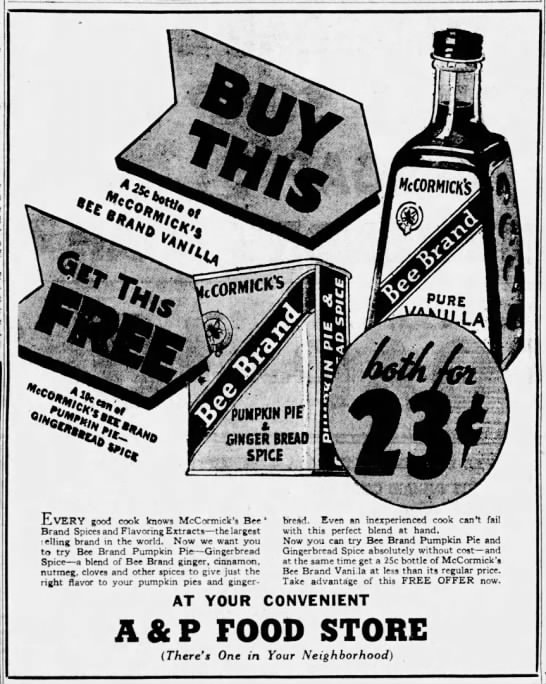
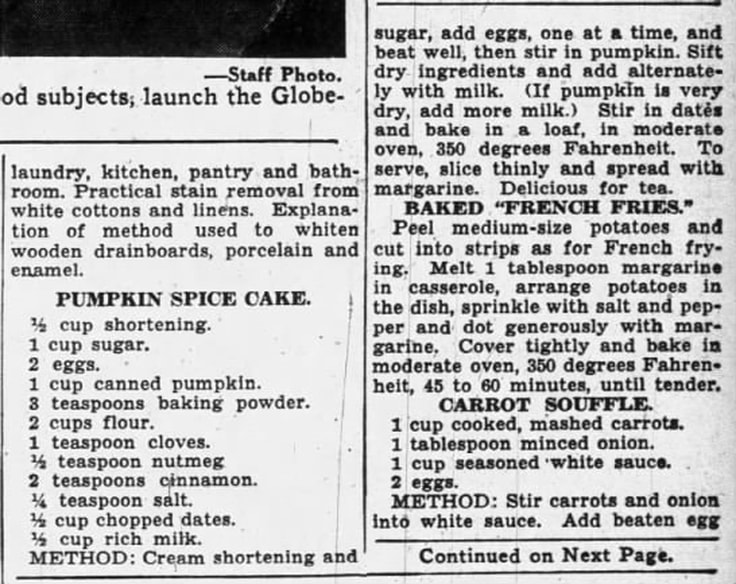

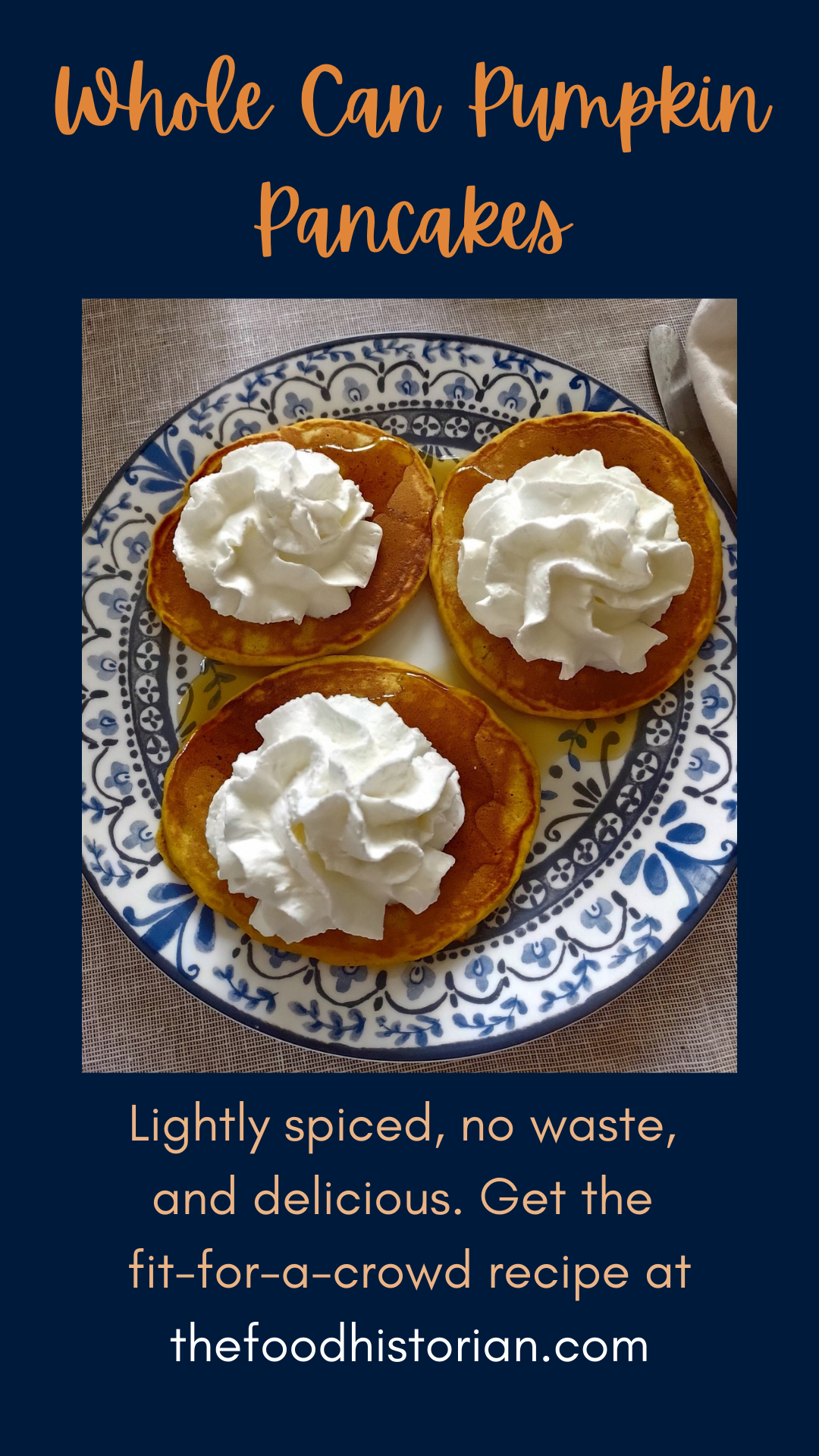
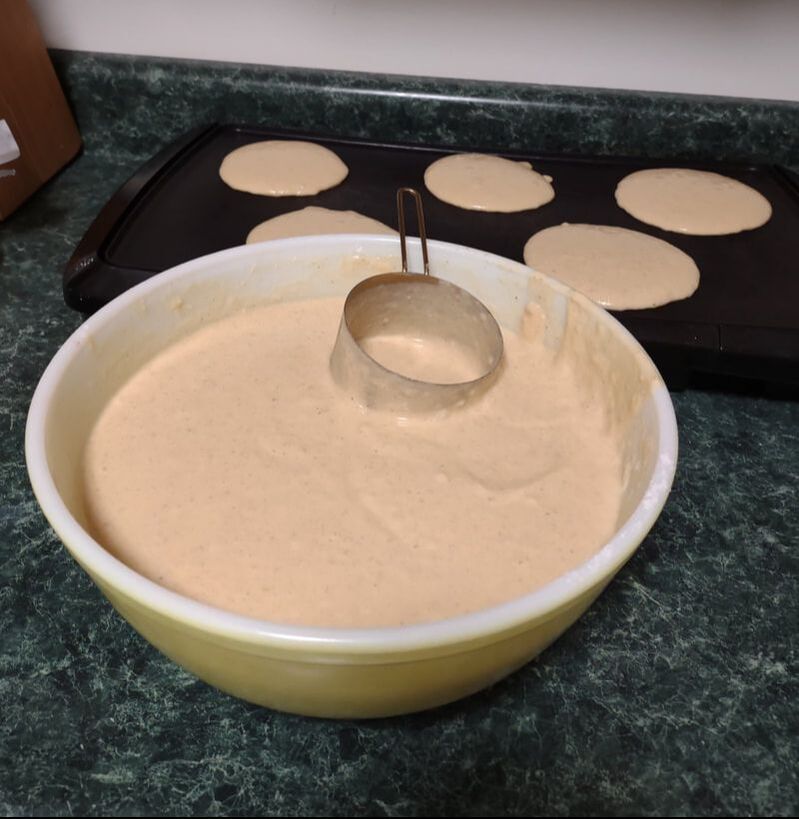
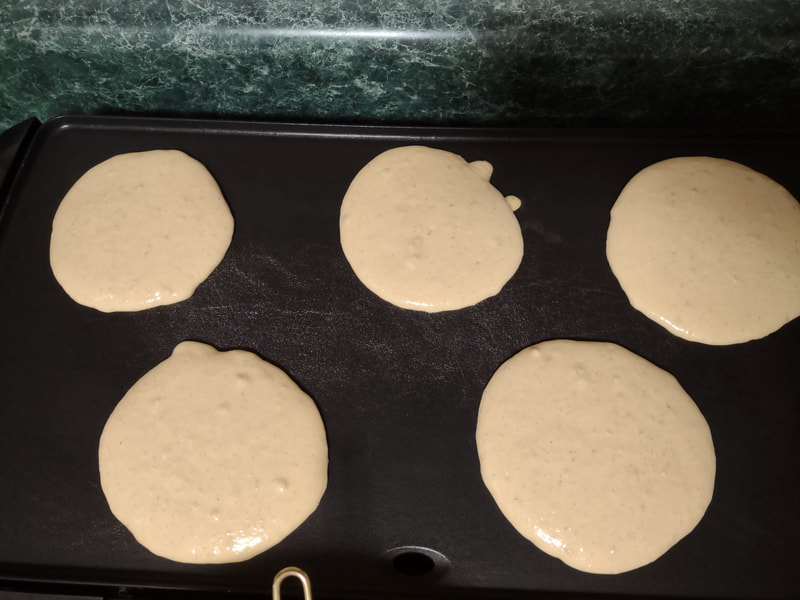
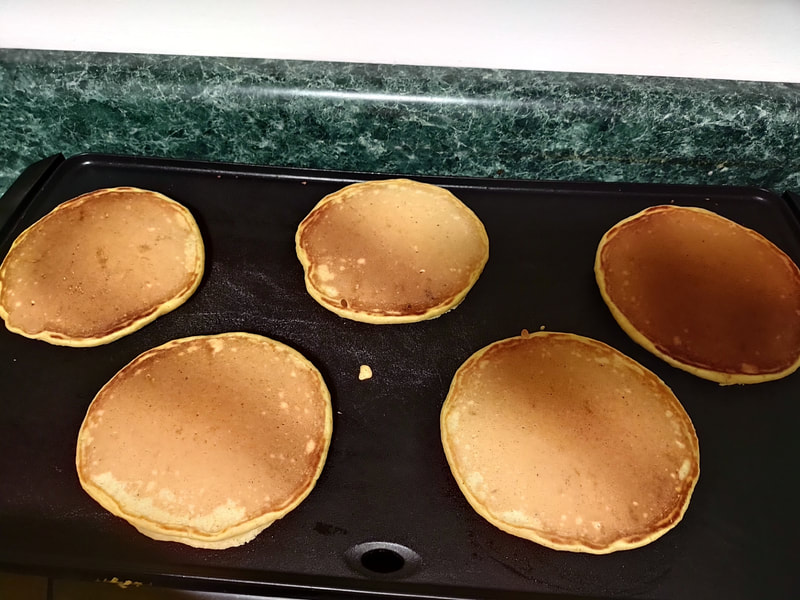
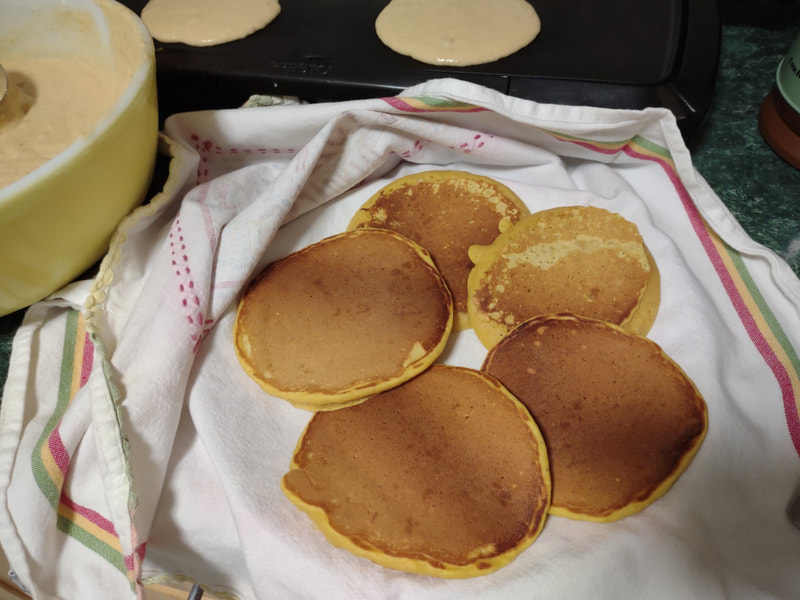
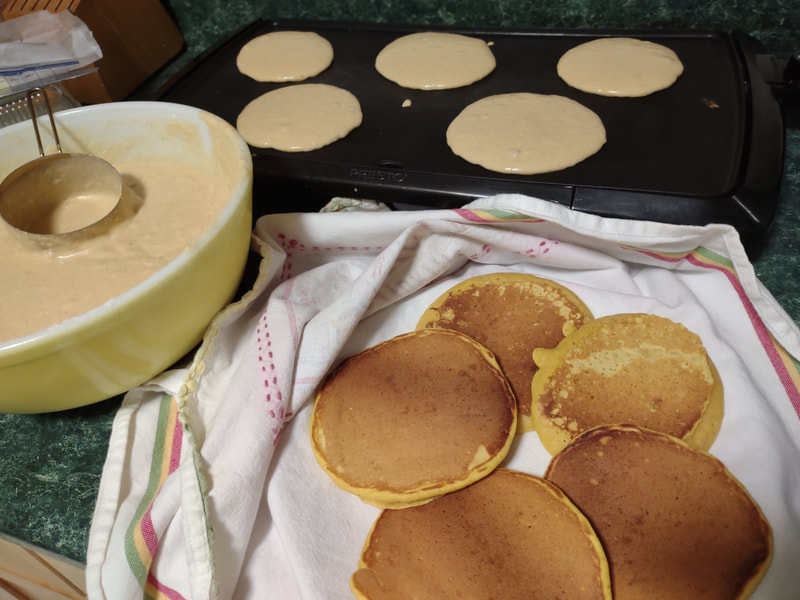
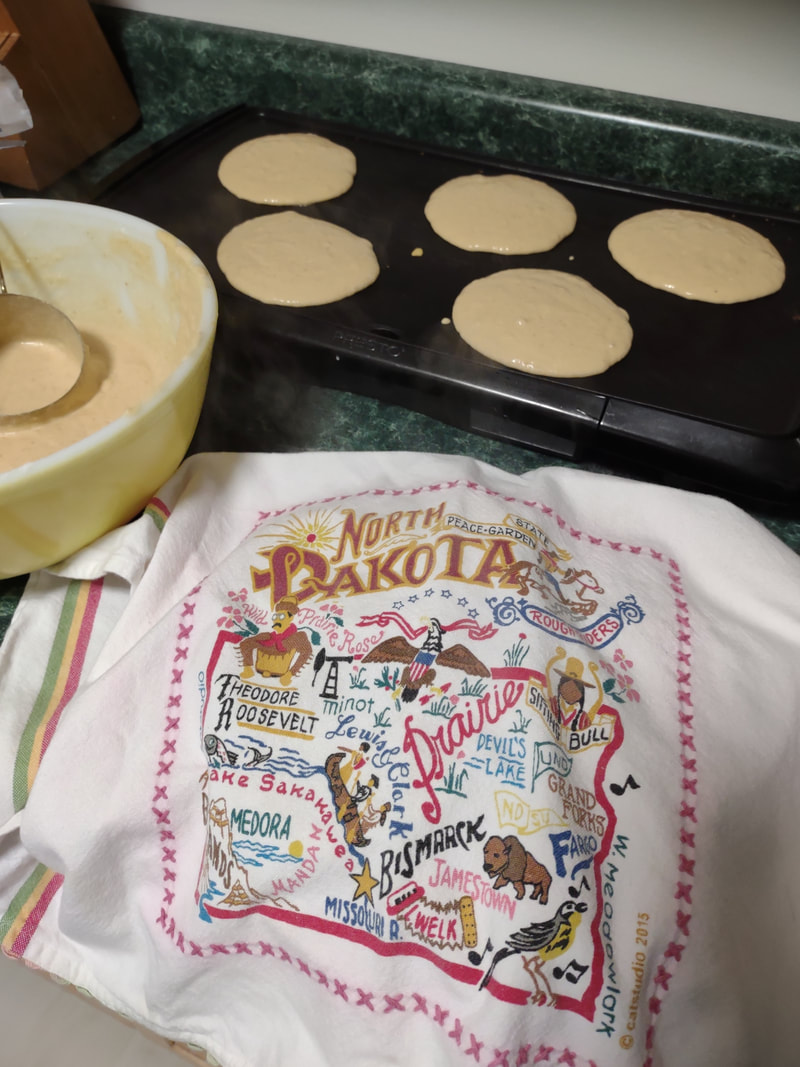
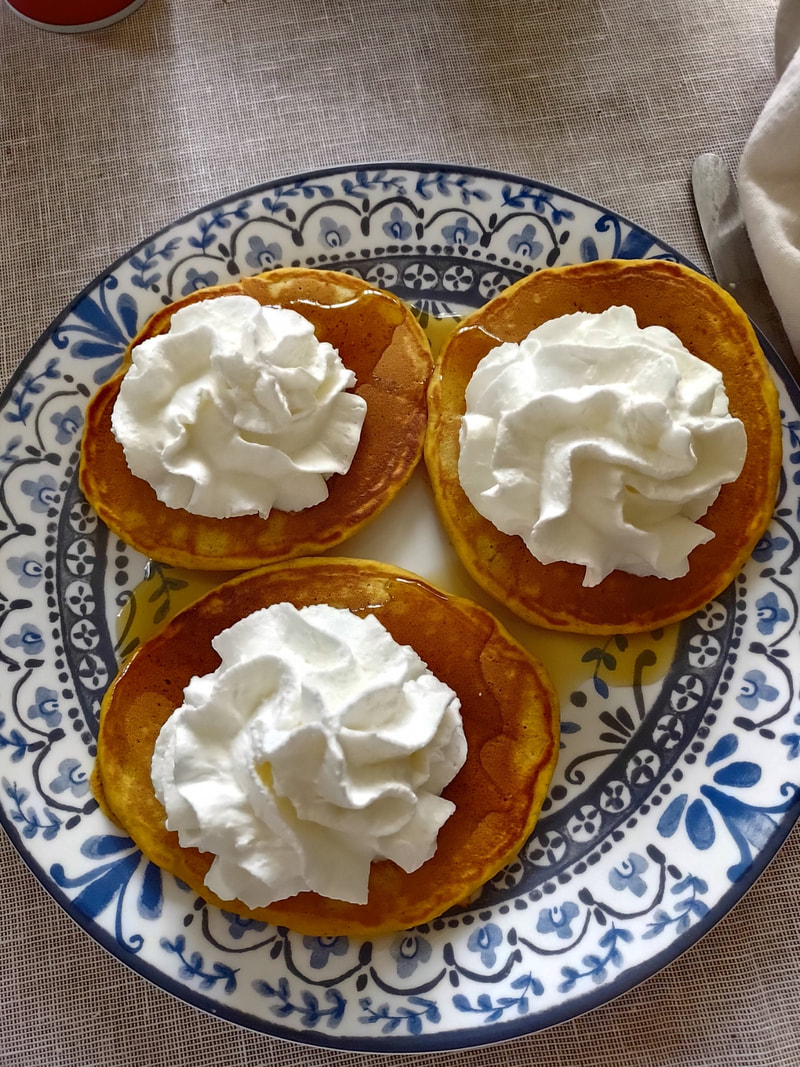


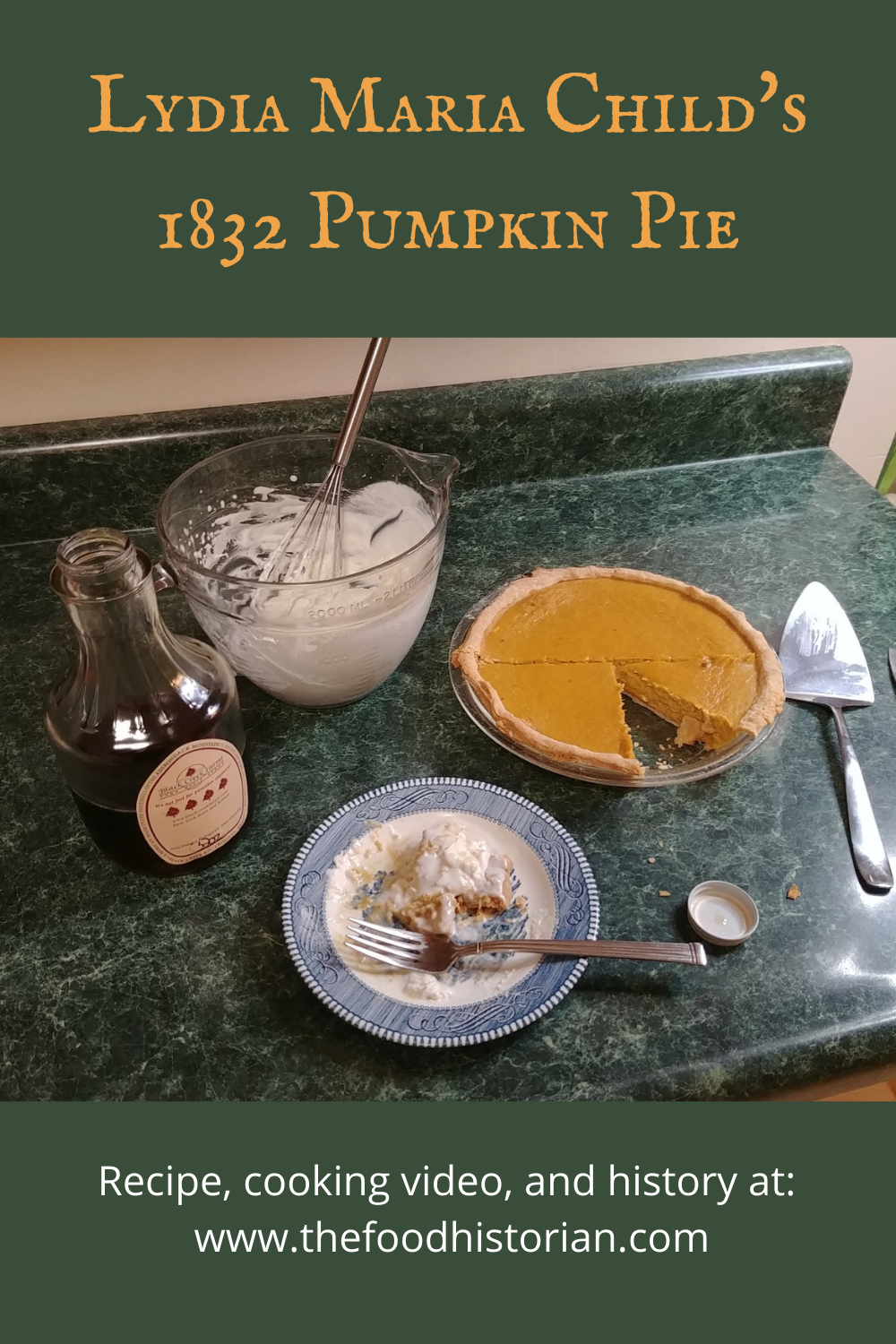
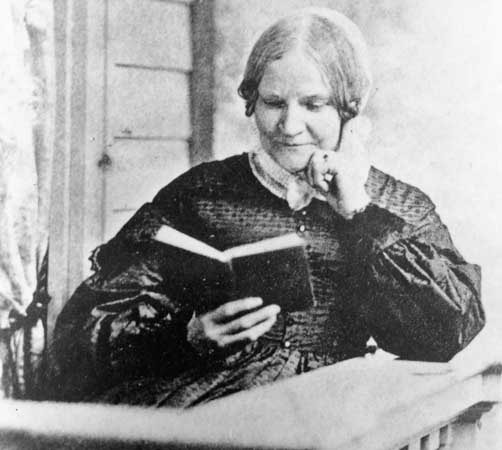
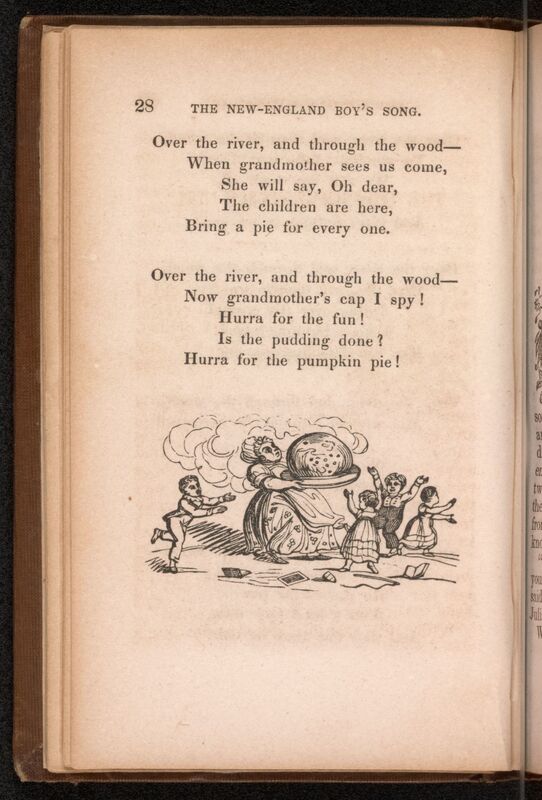
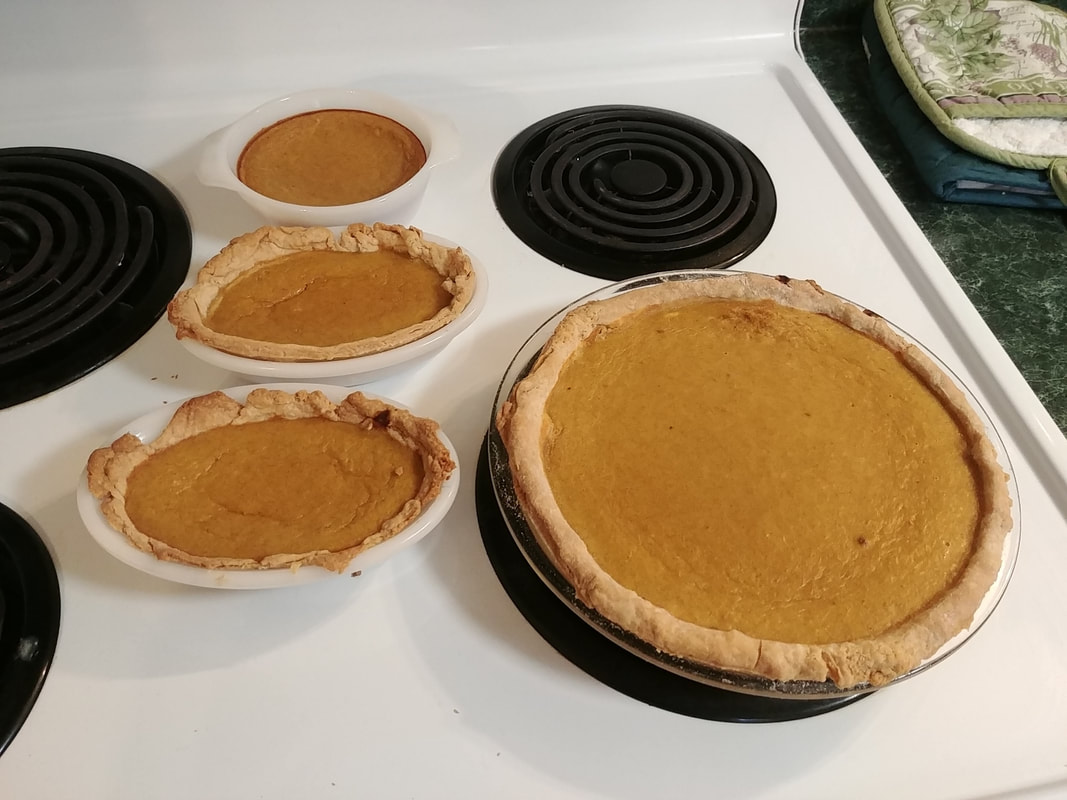
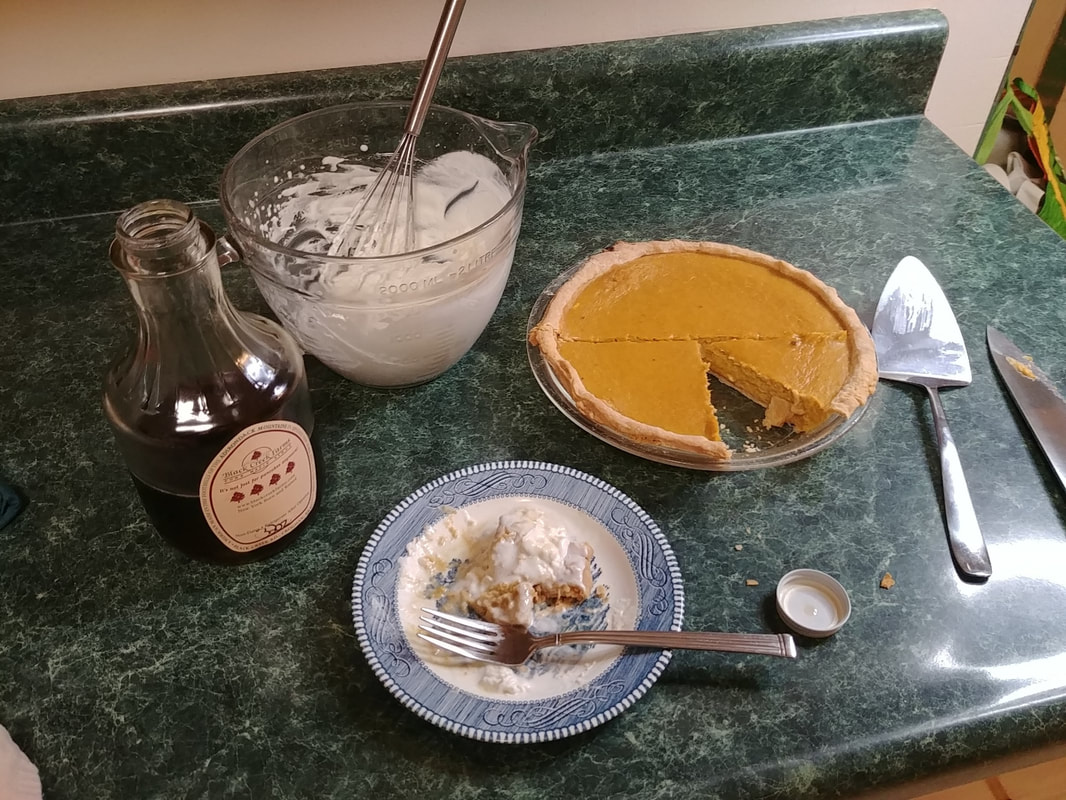
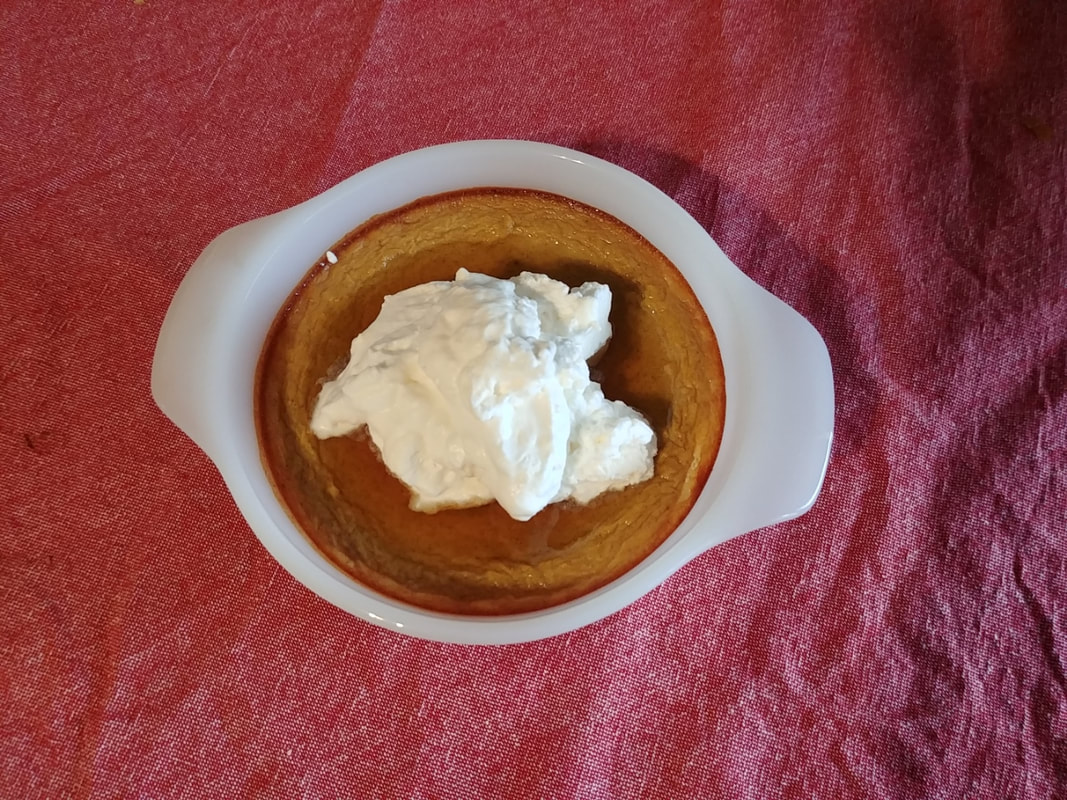
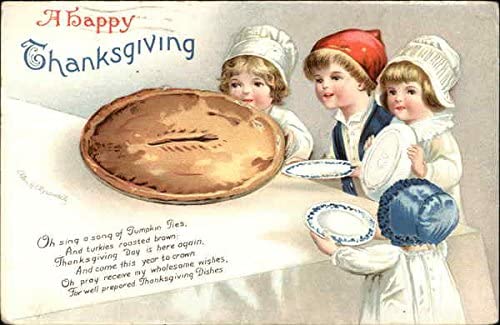
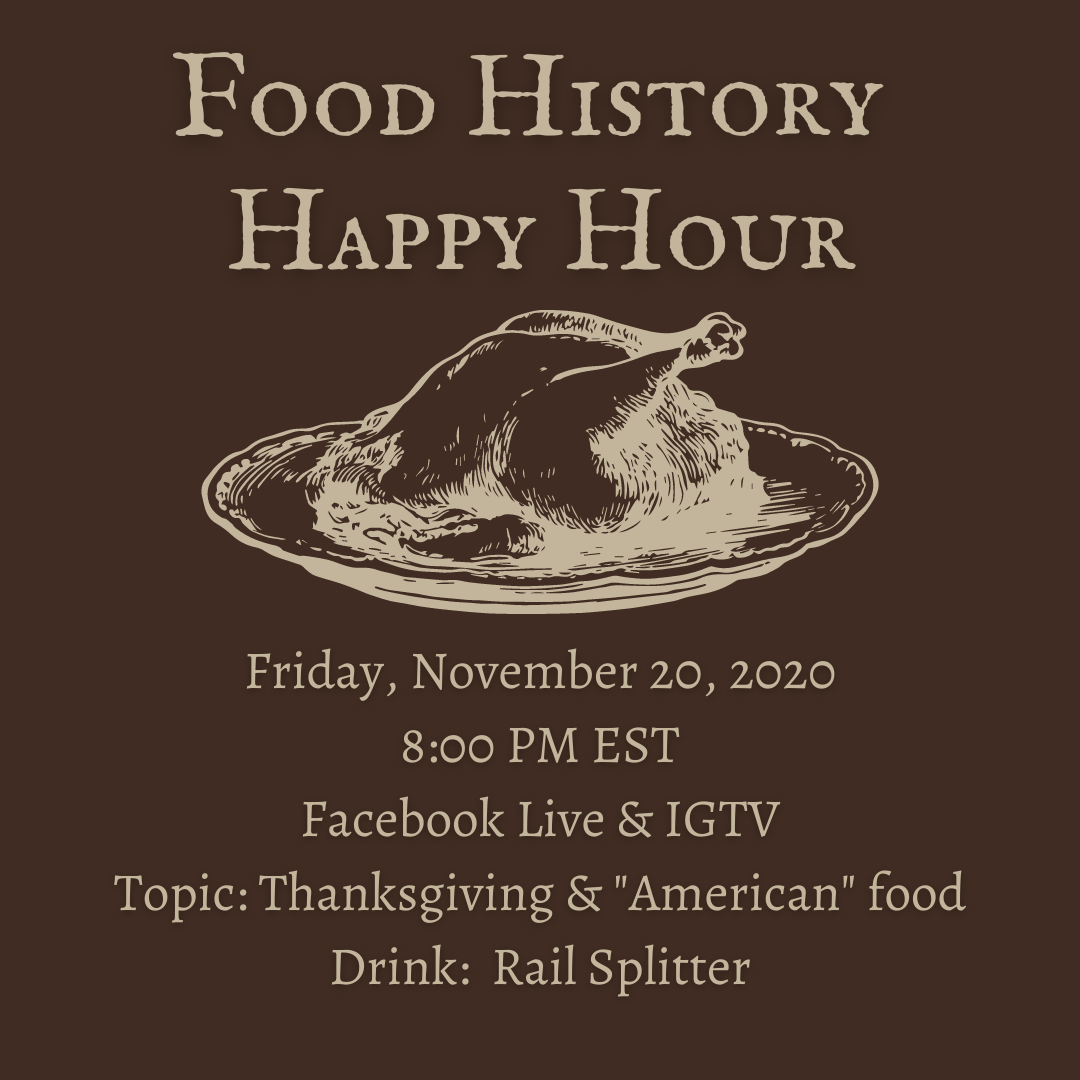
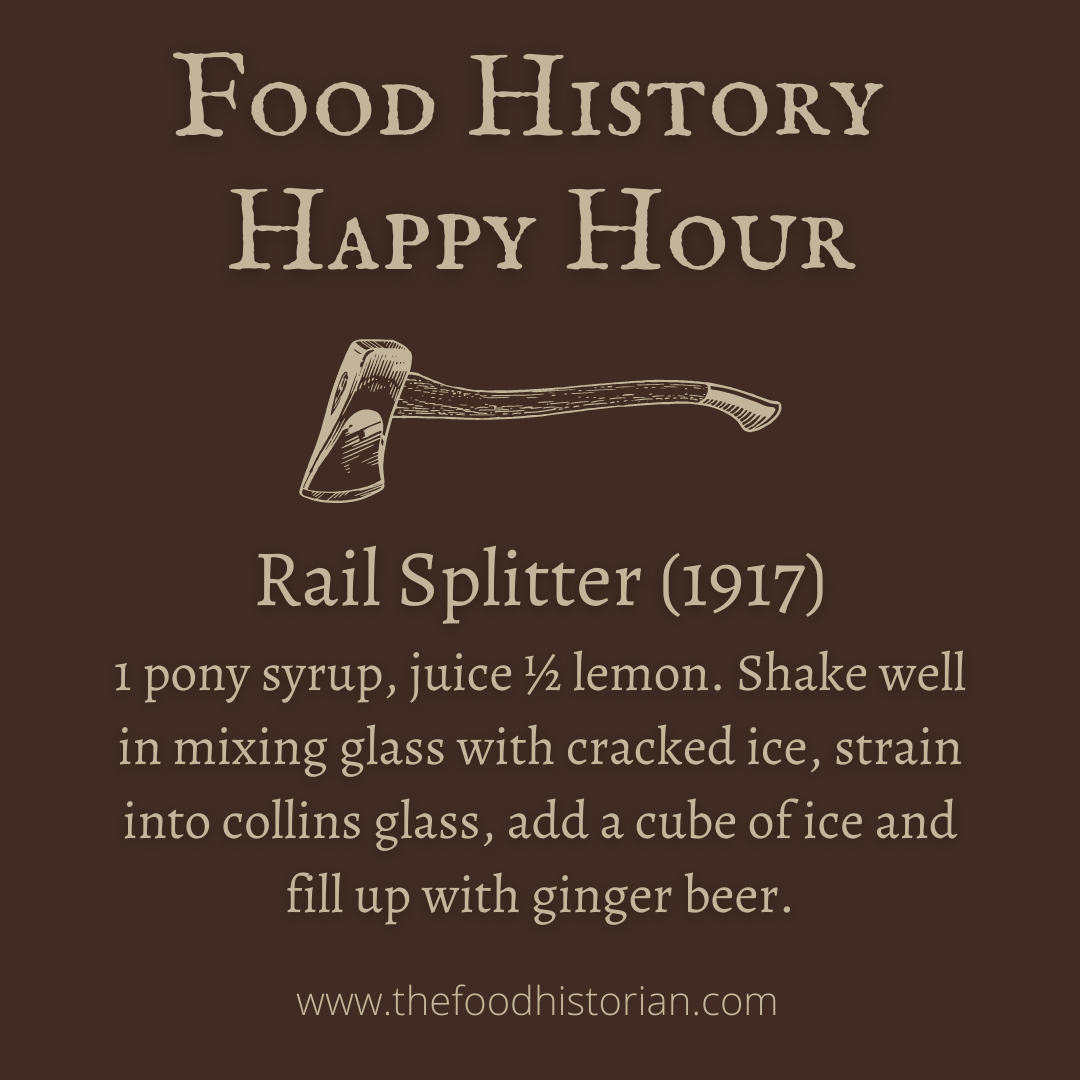
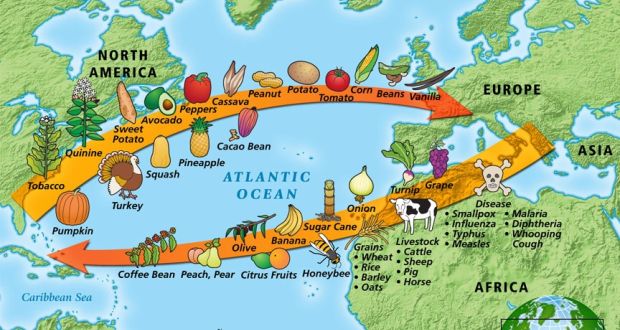
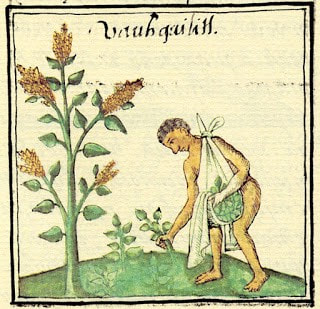
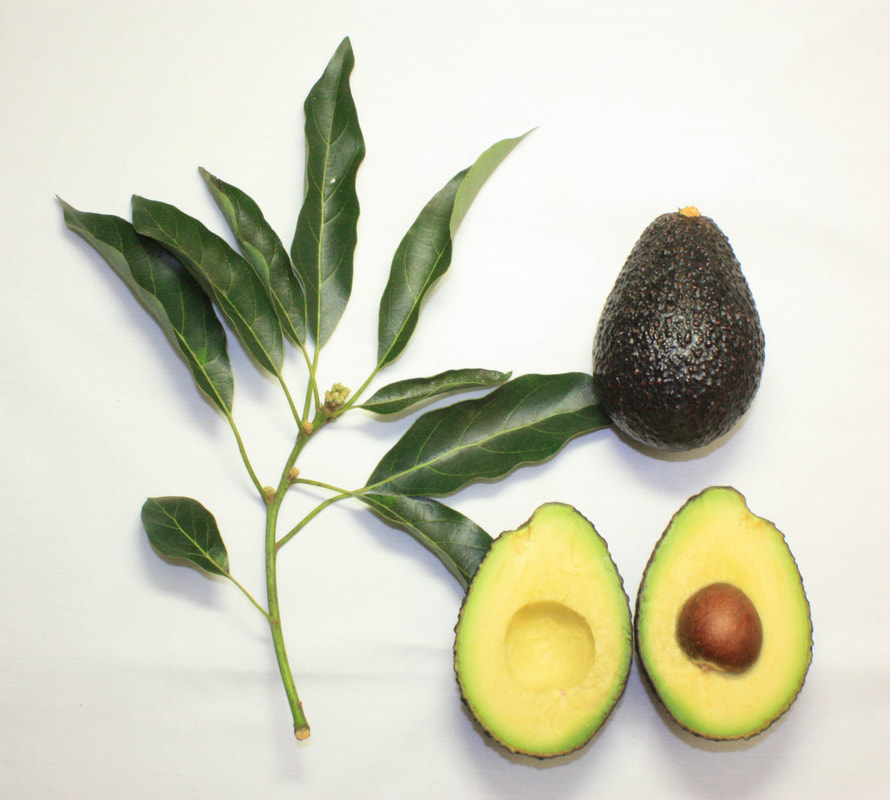
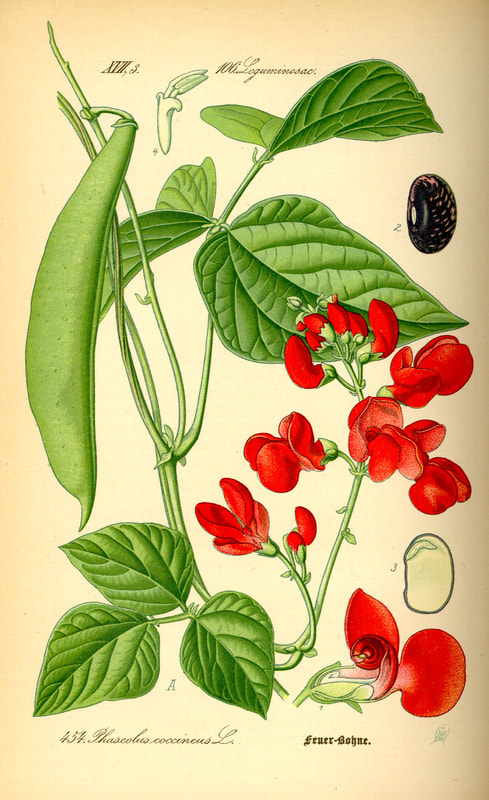
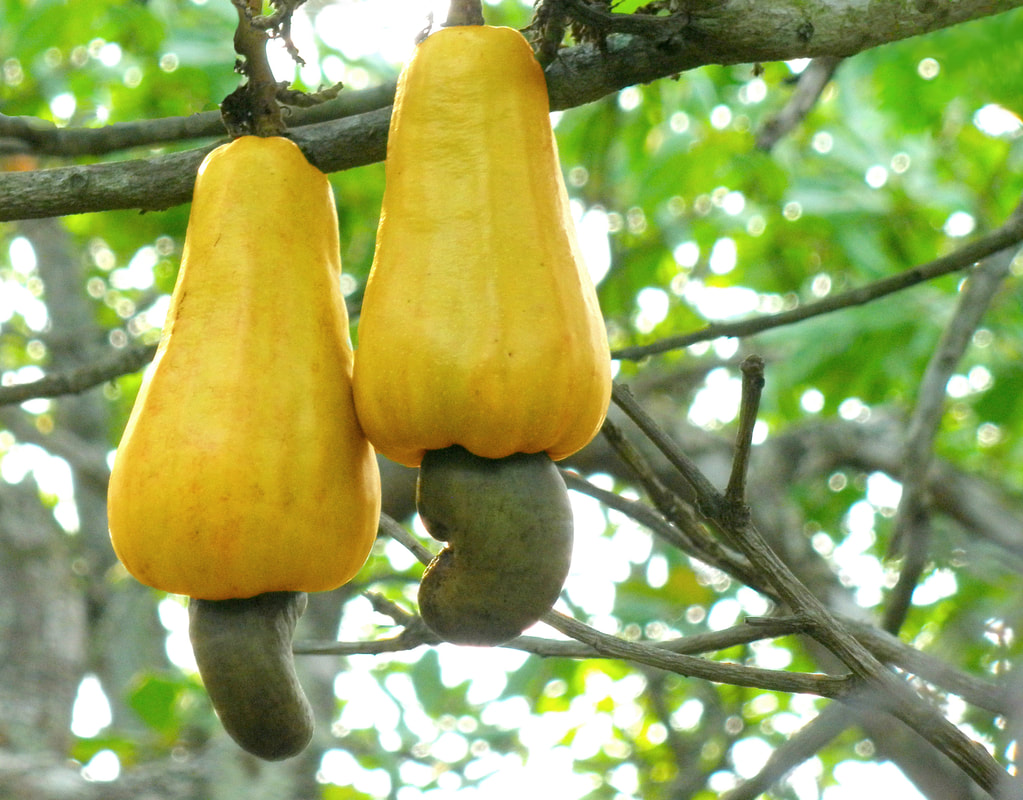
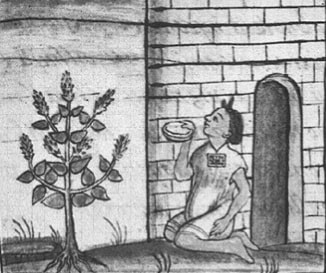
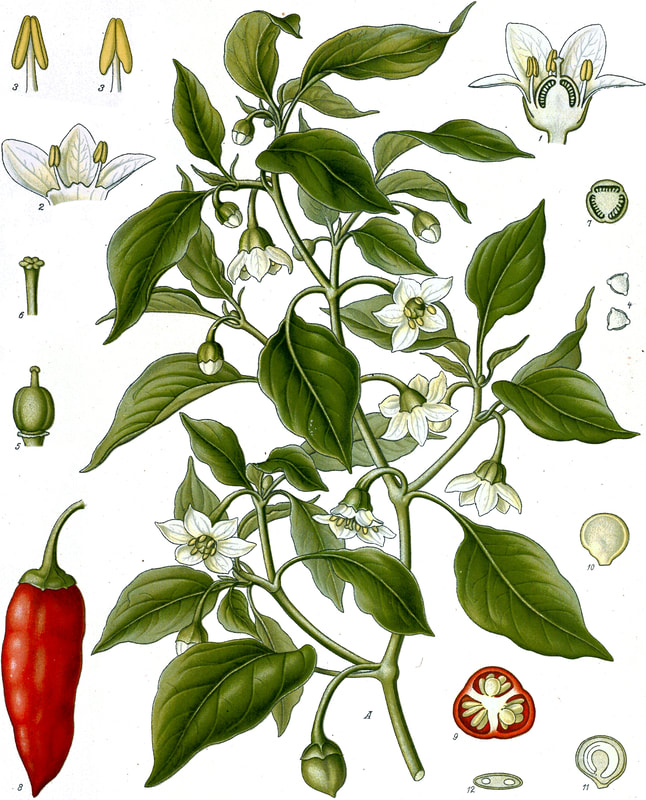
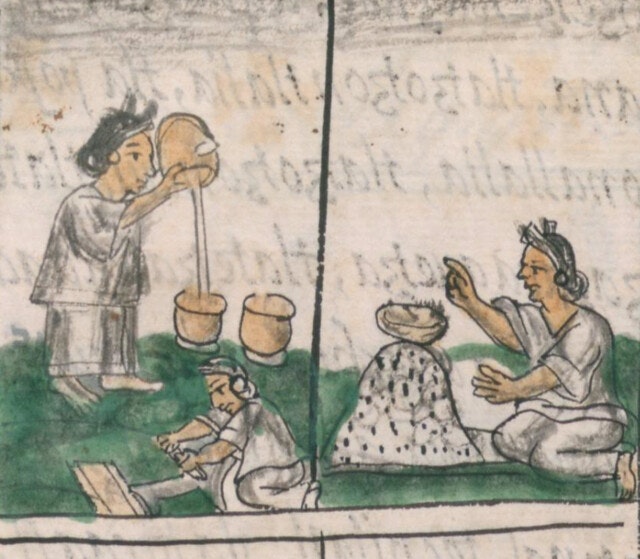
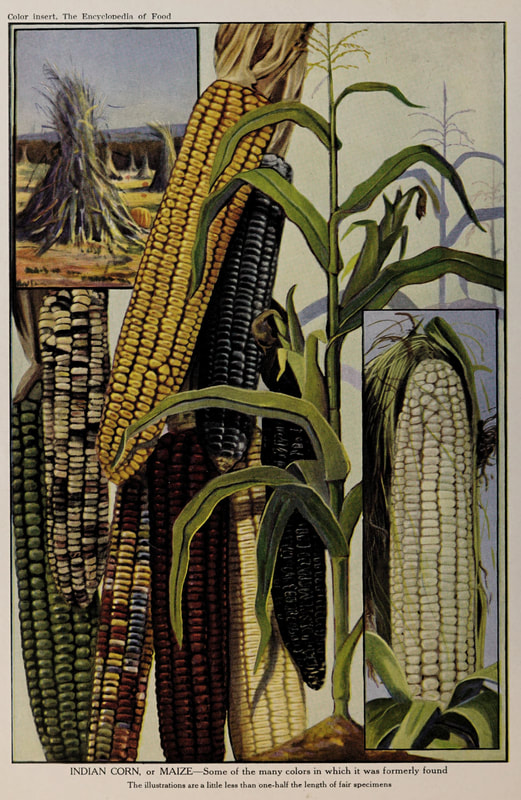
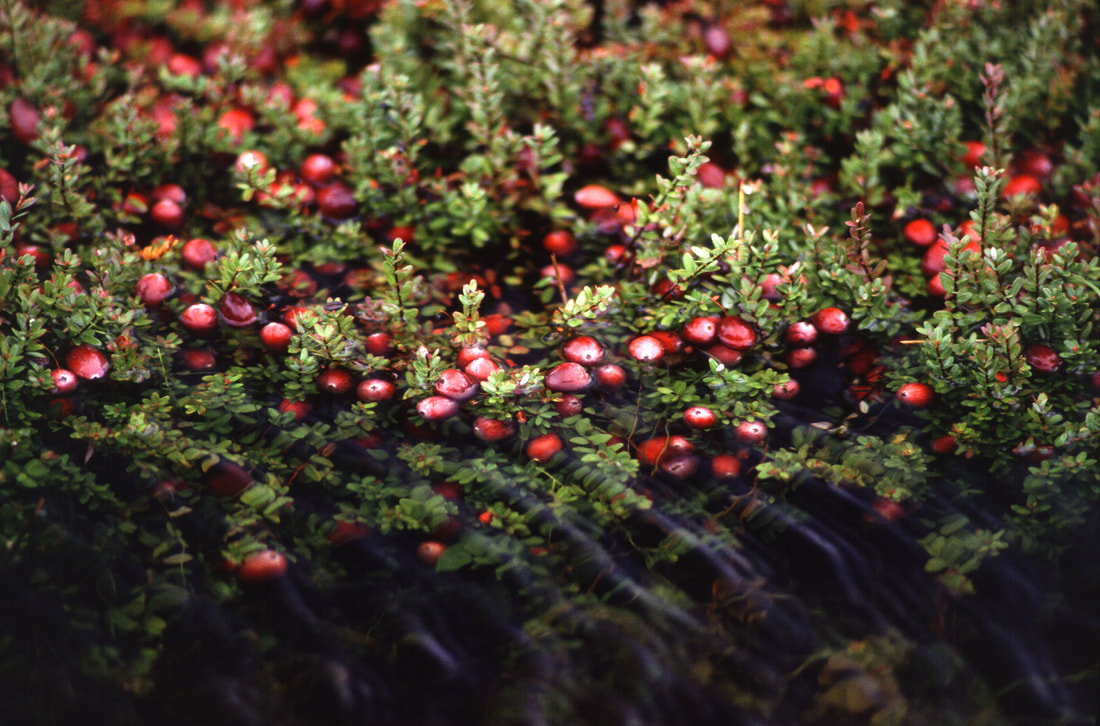
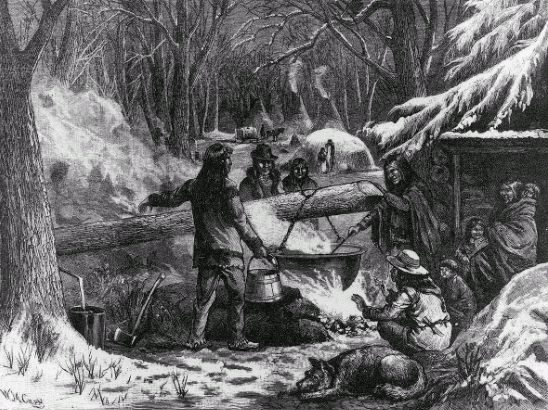
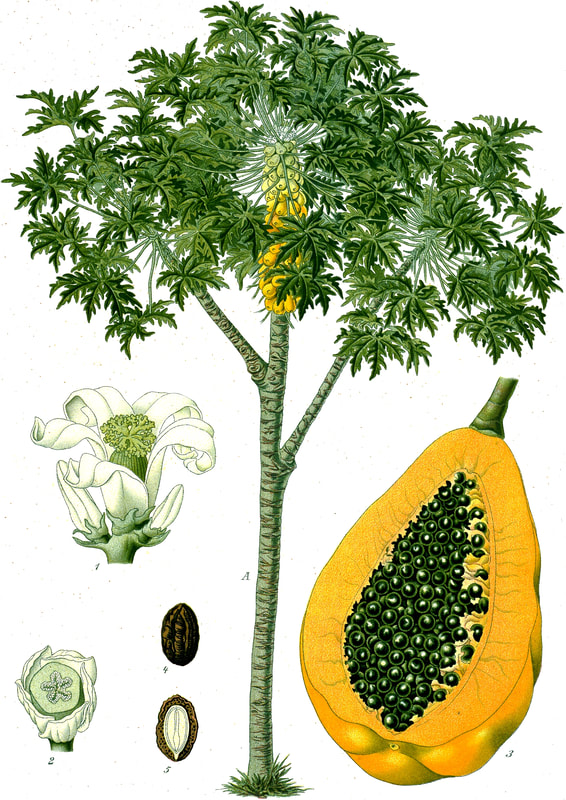
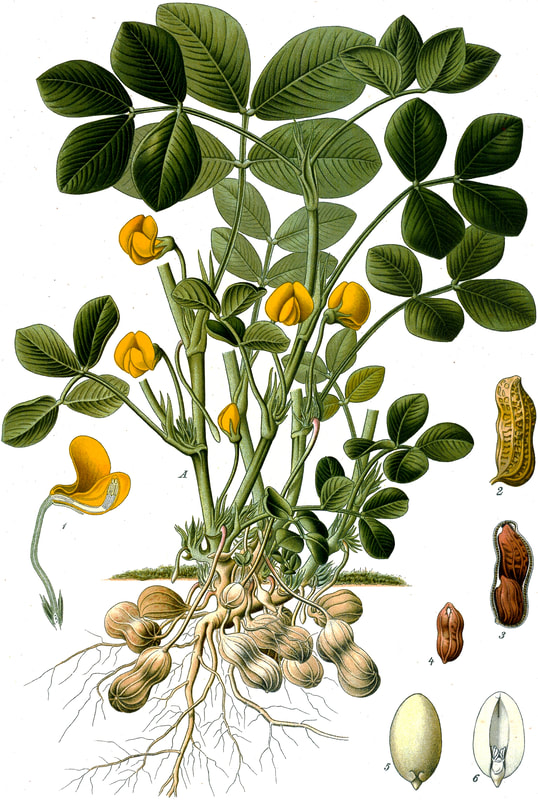
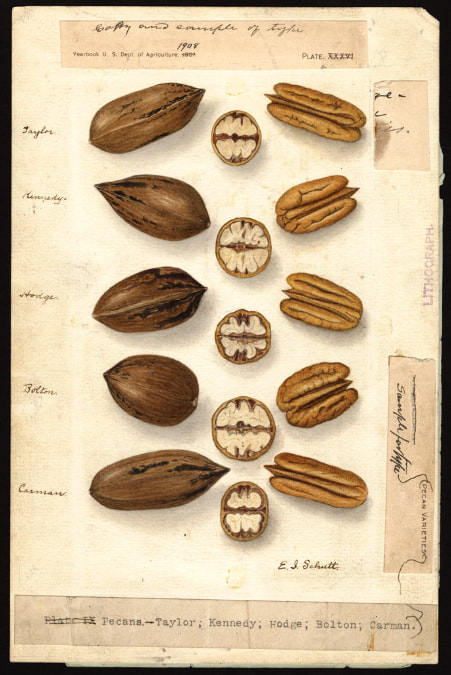
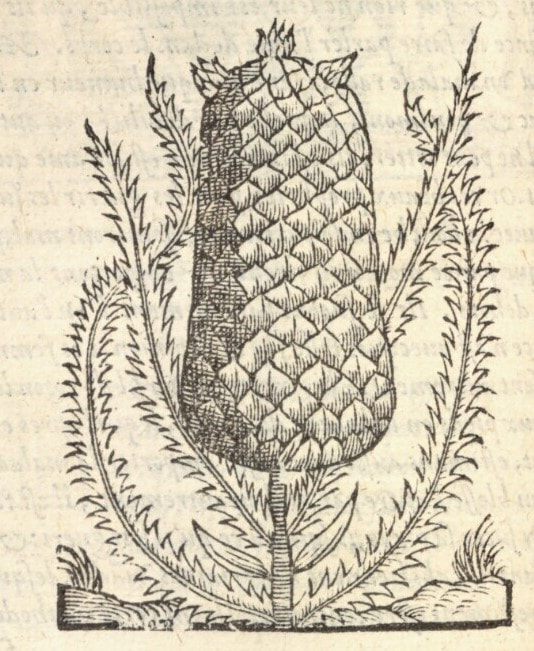
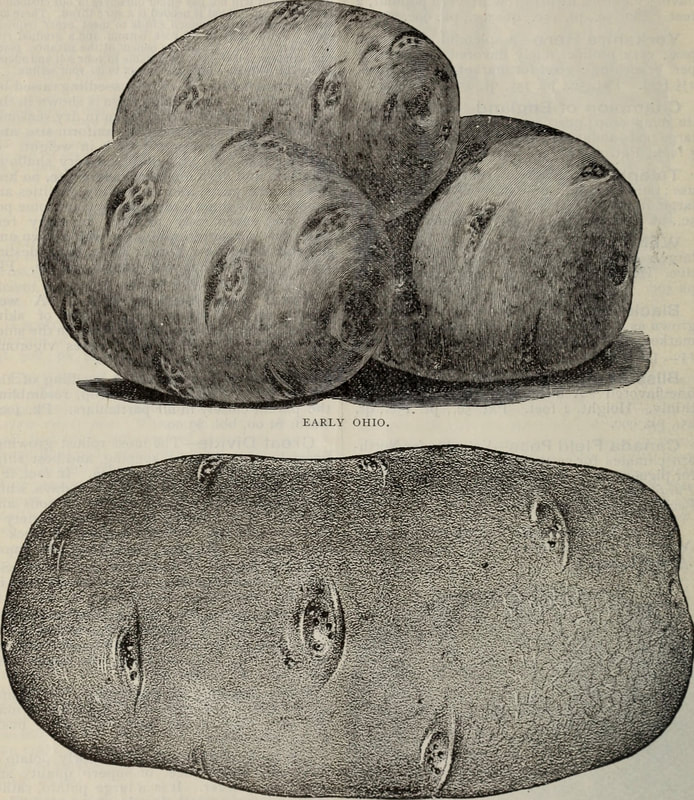
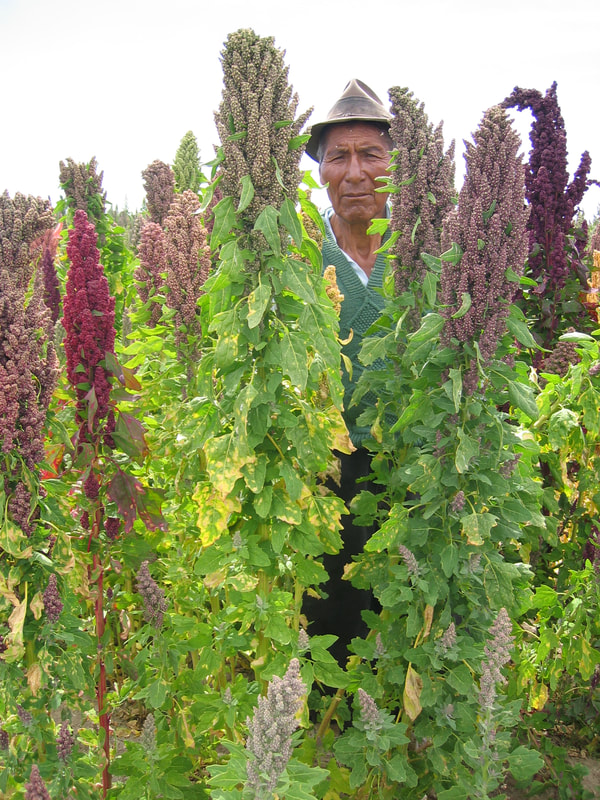
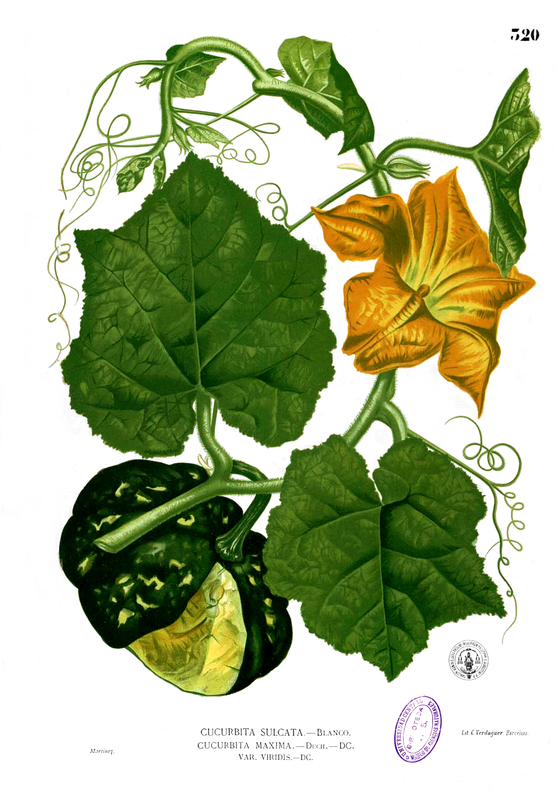
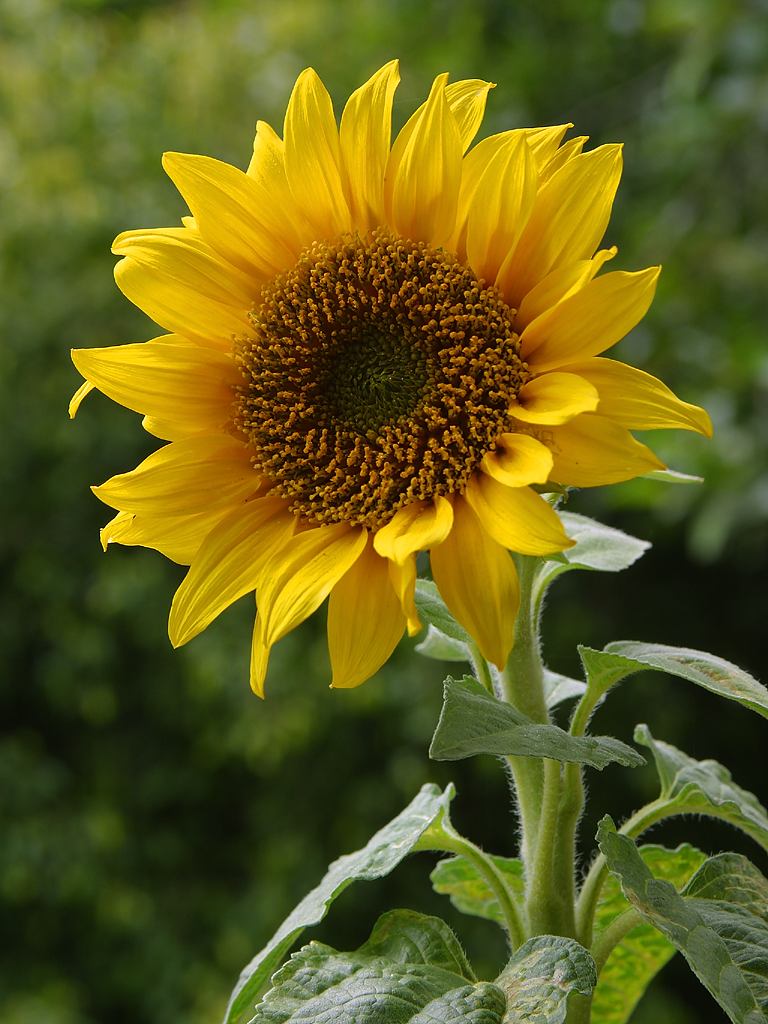
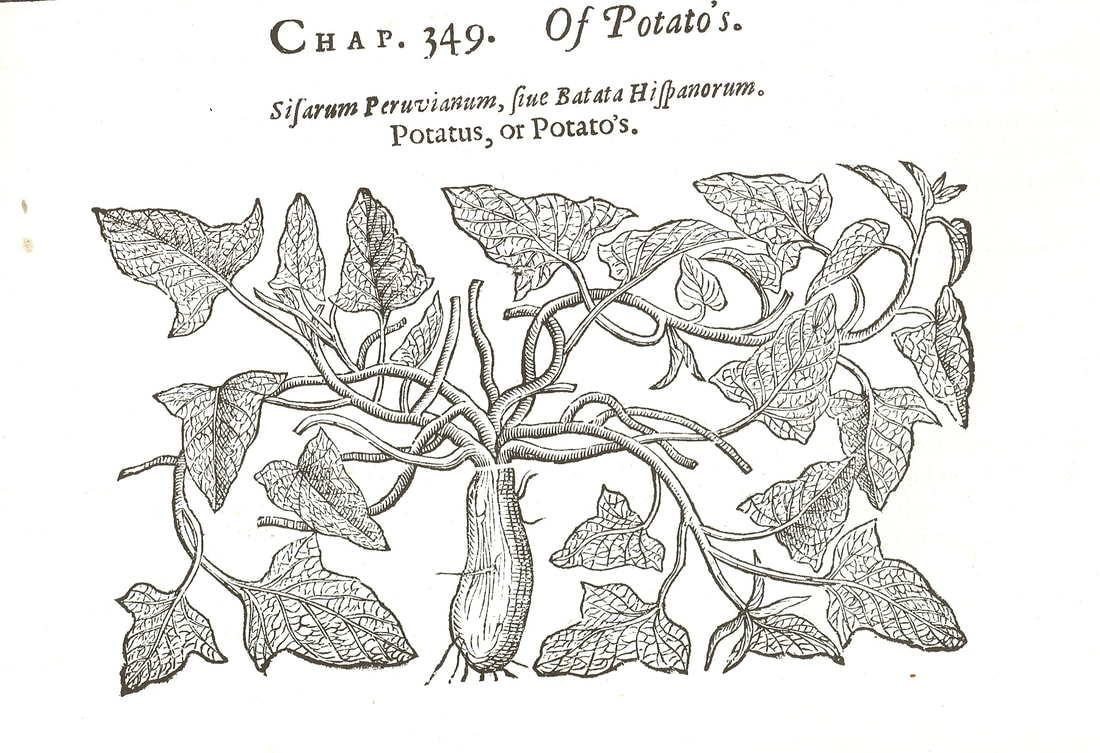
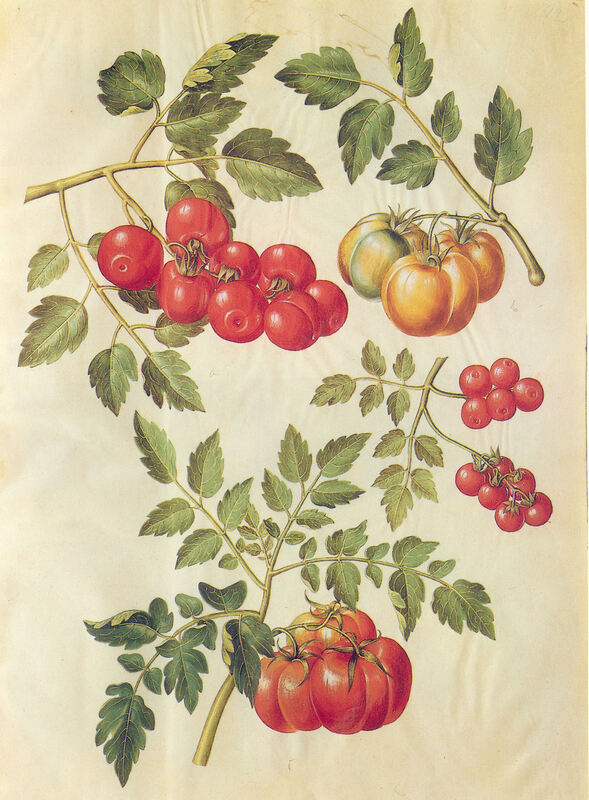
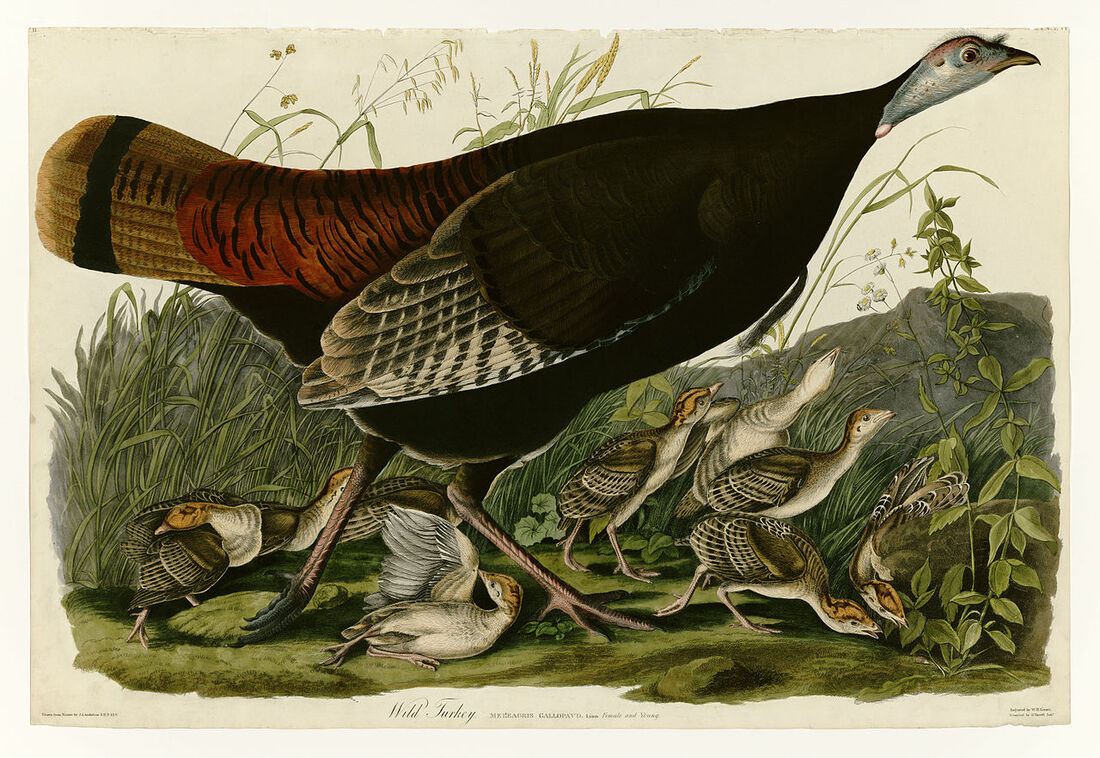
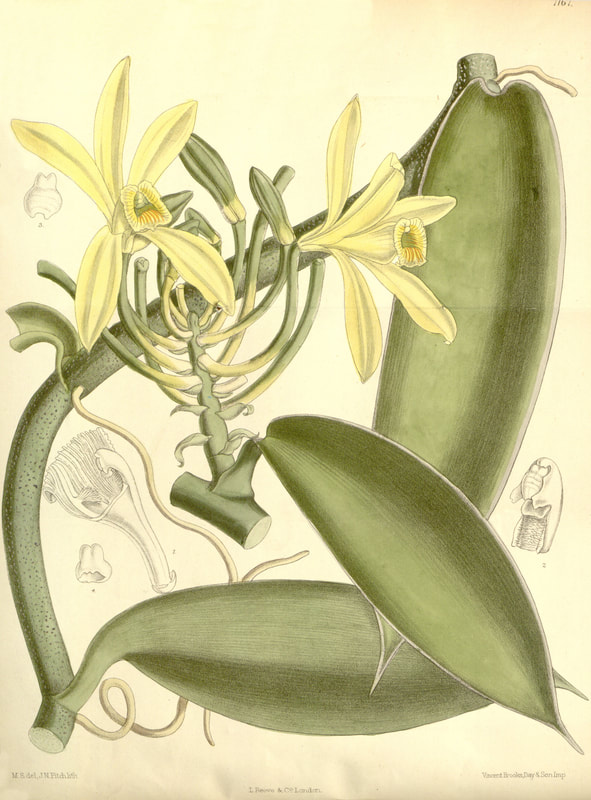
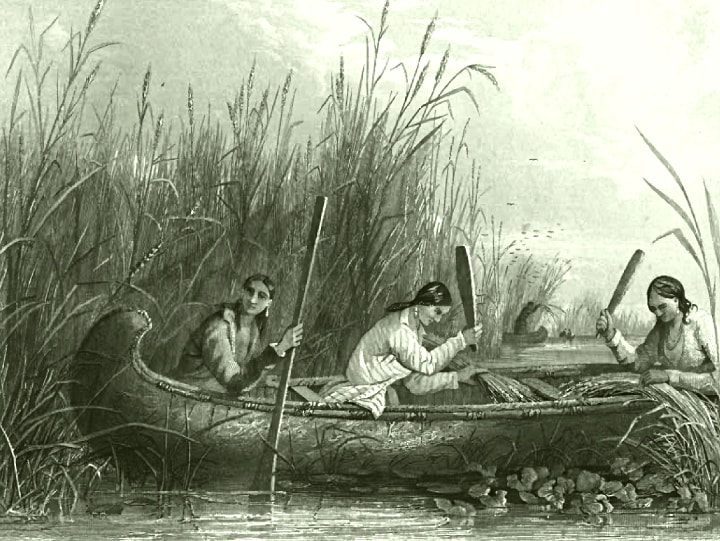
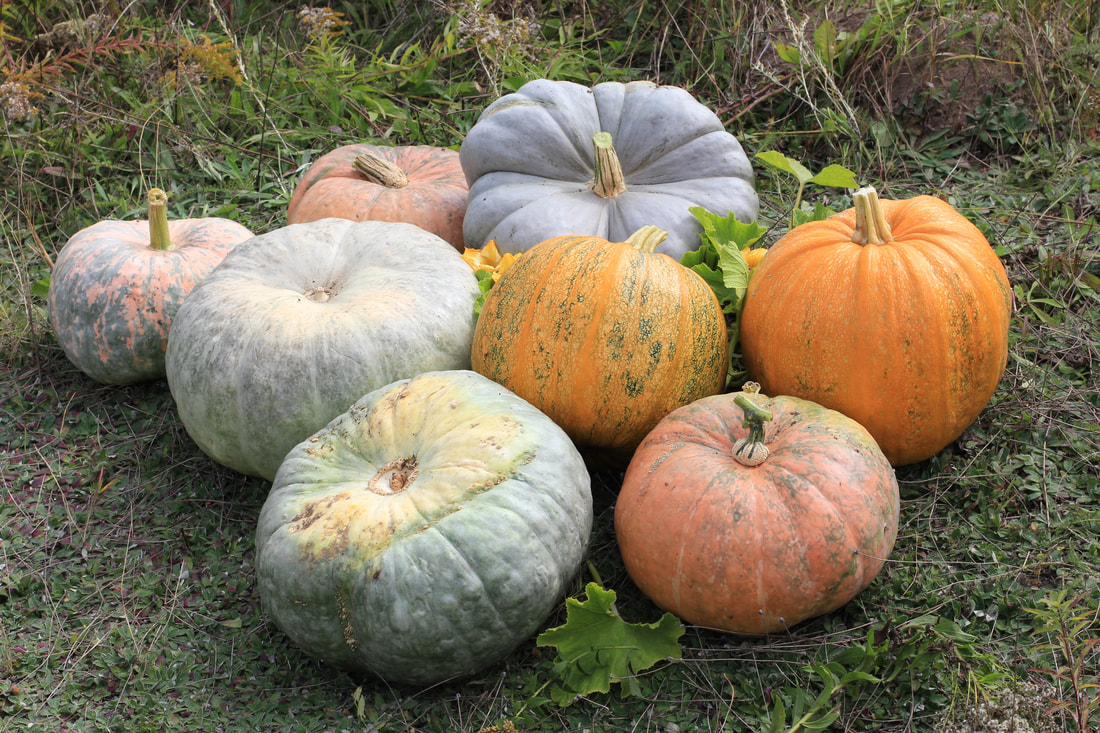
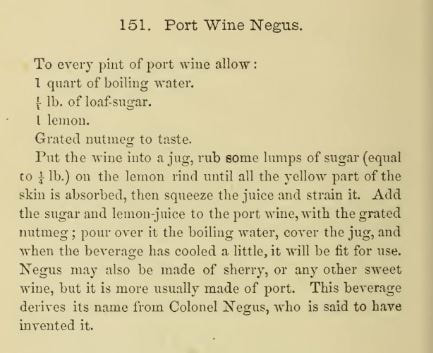


 RSS Feed
RSS Feed